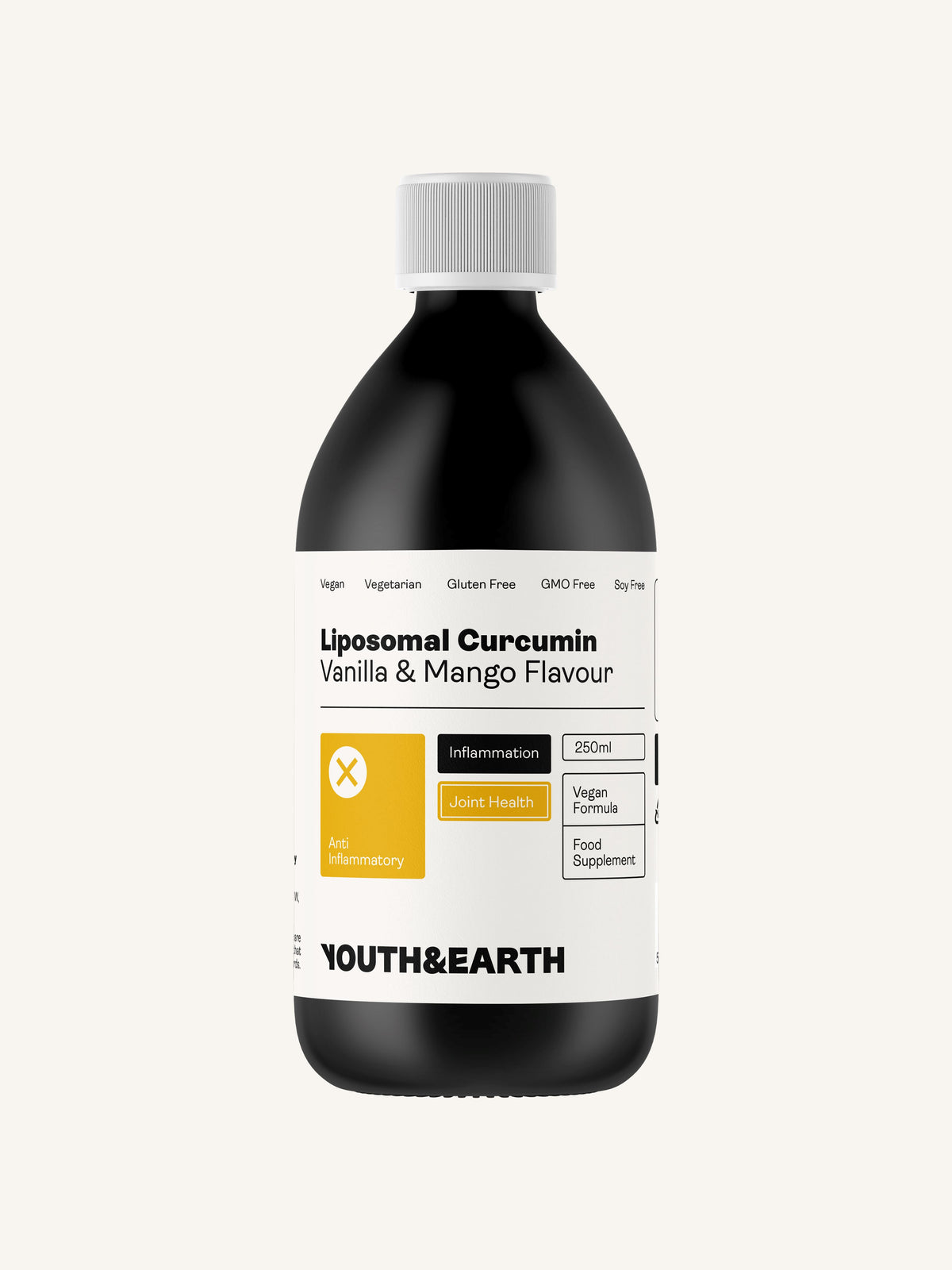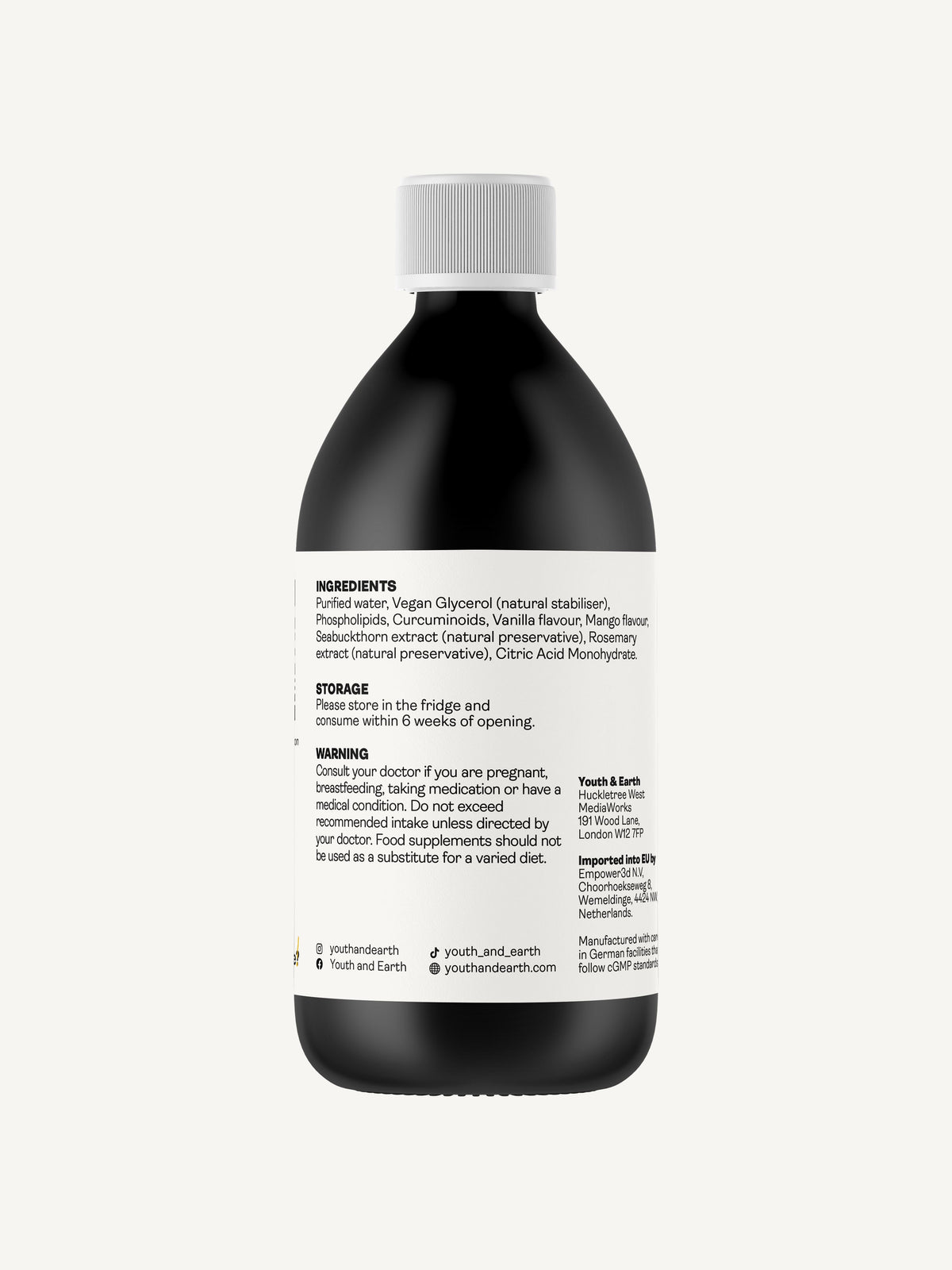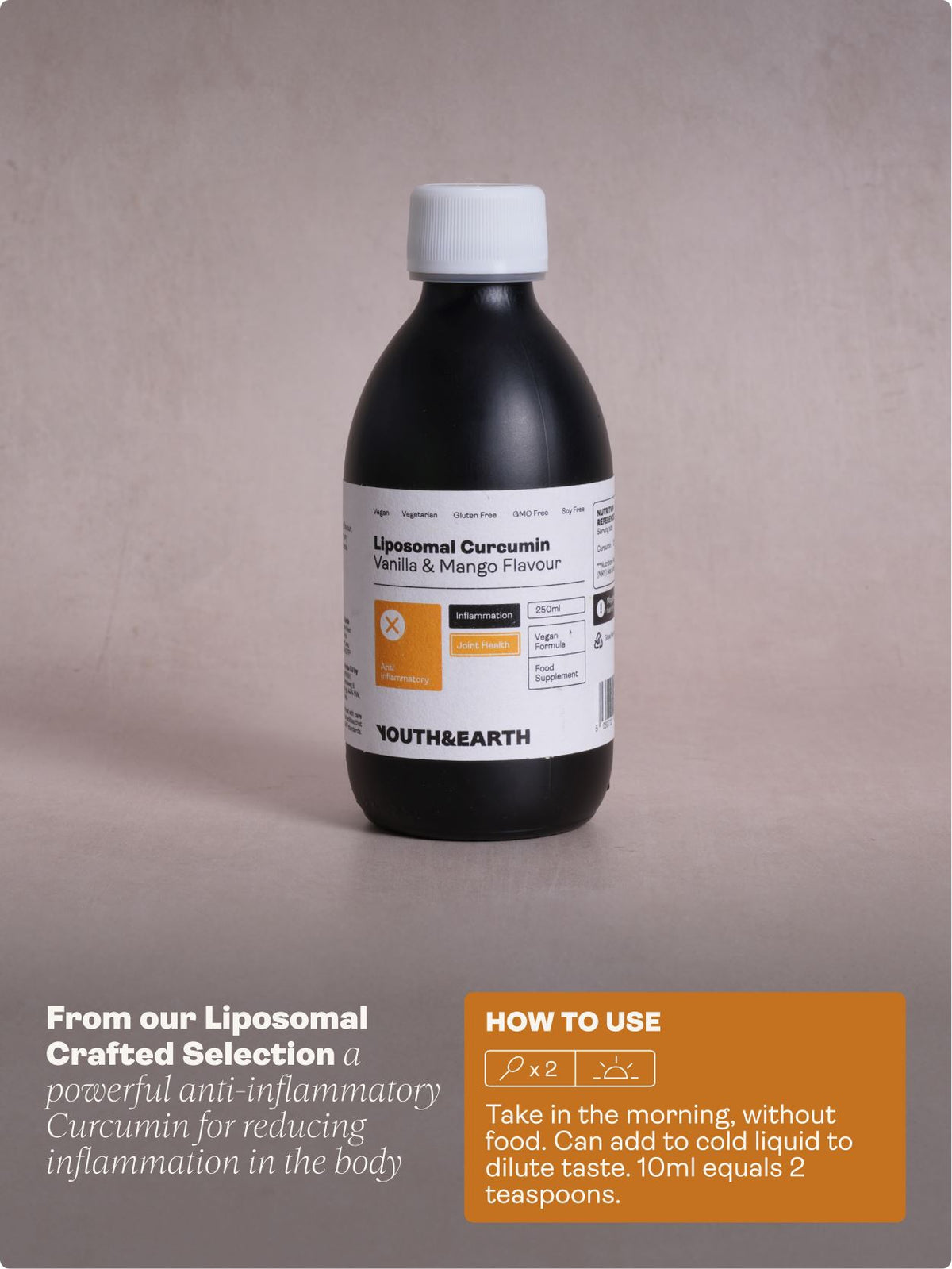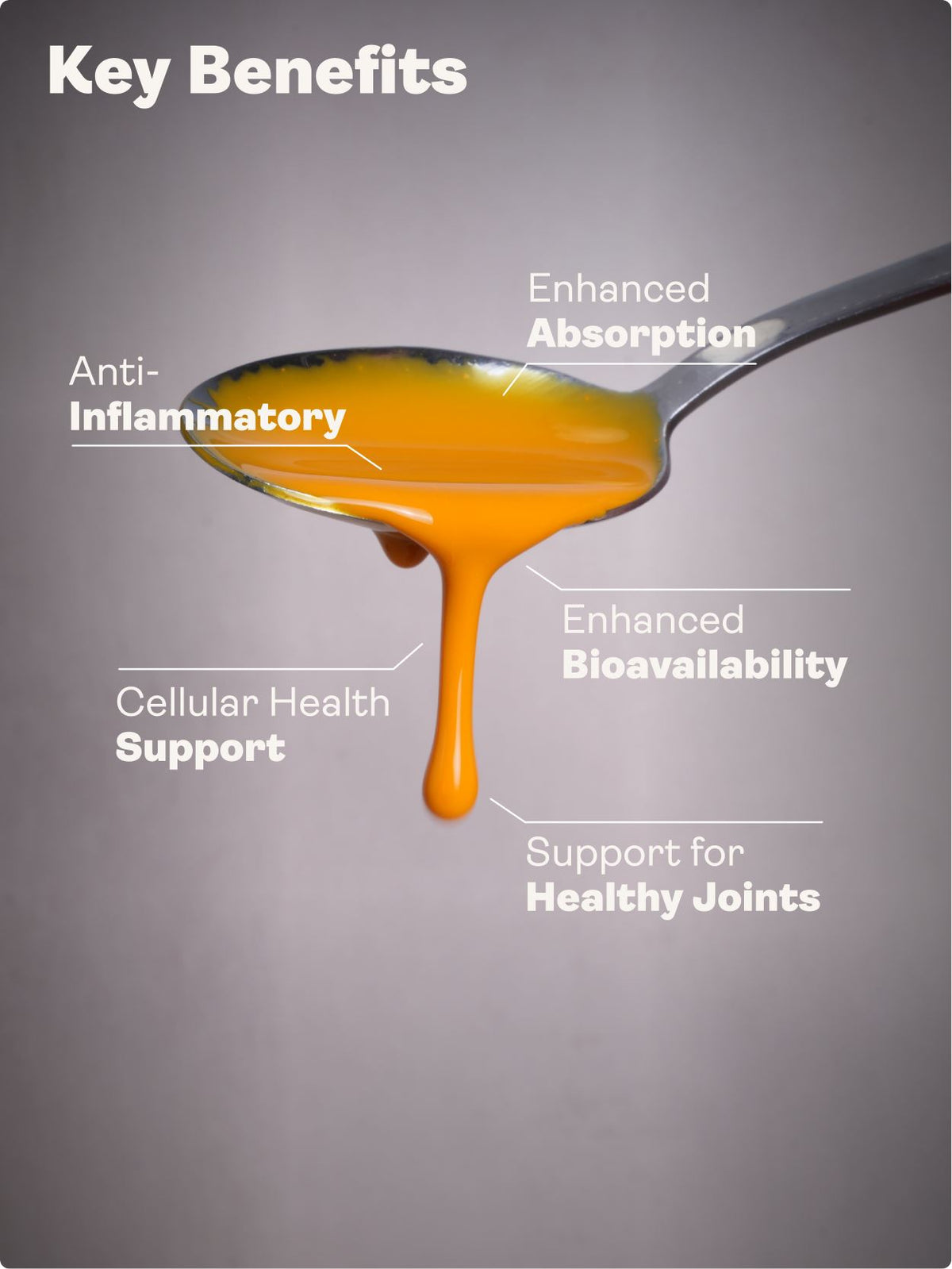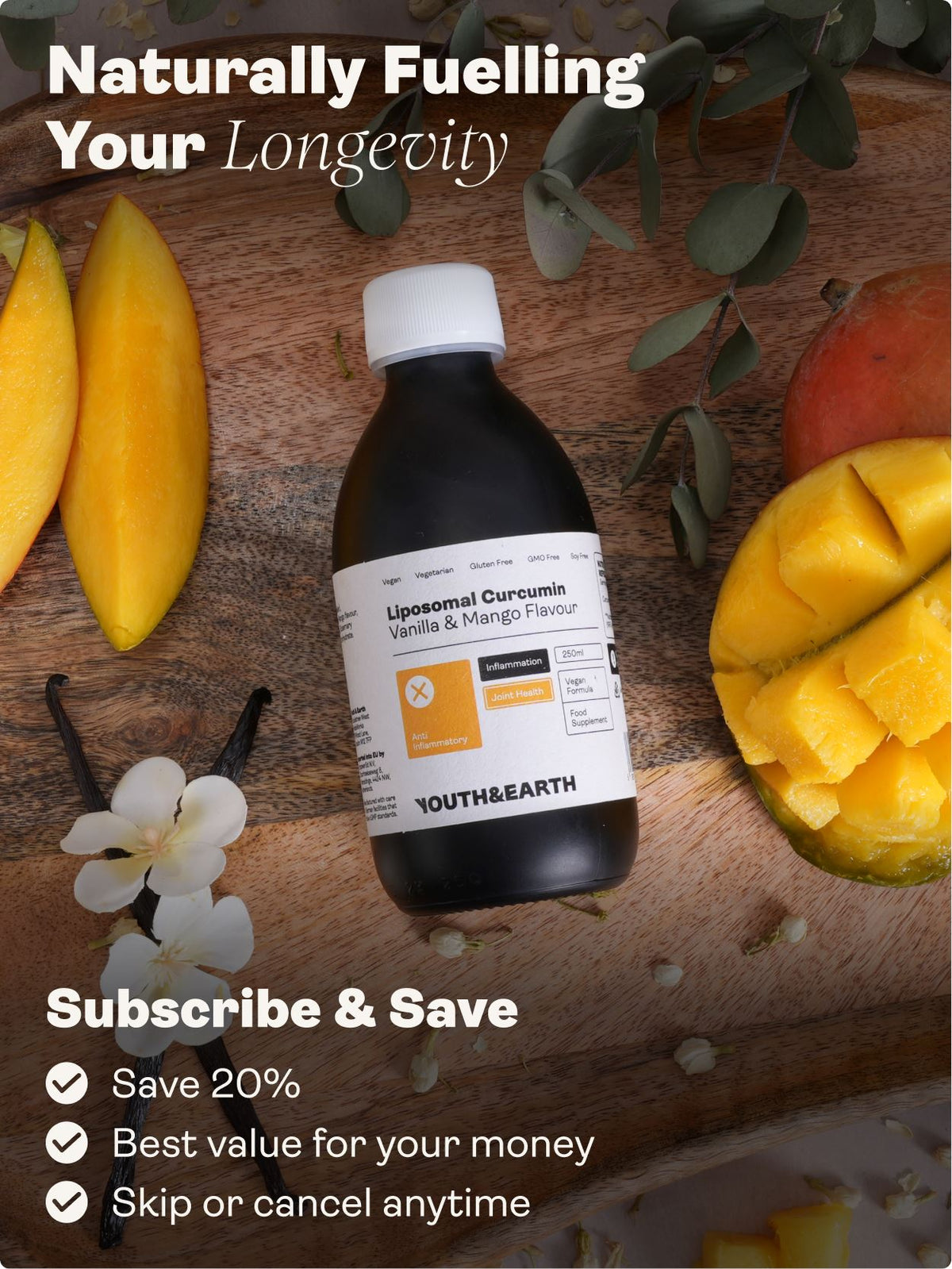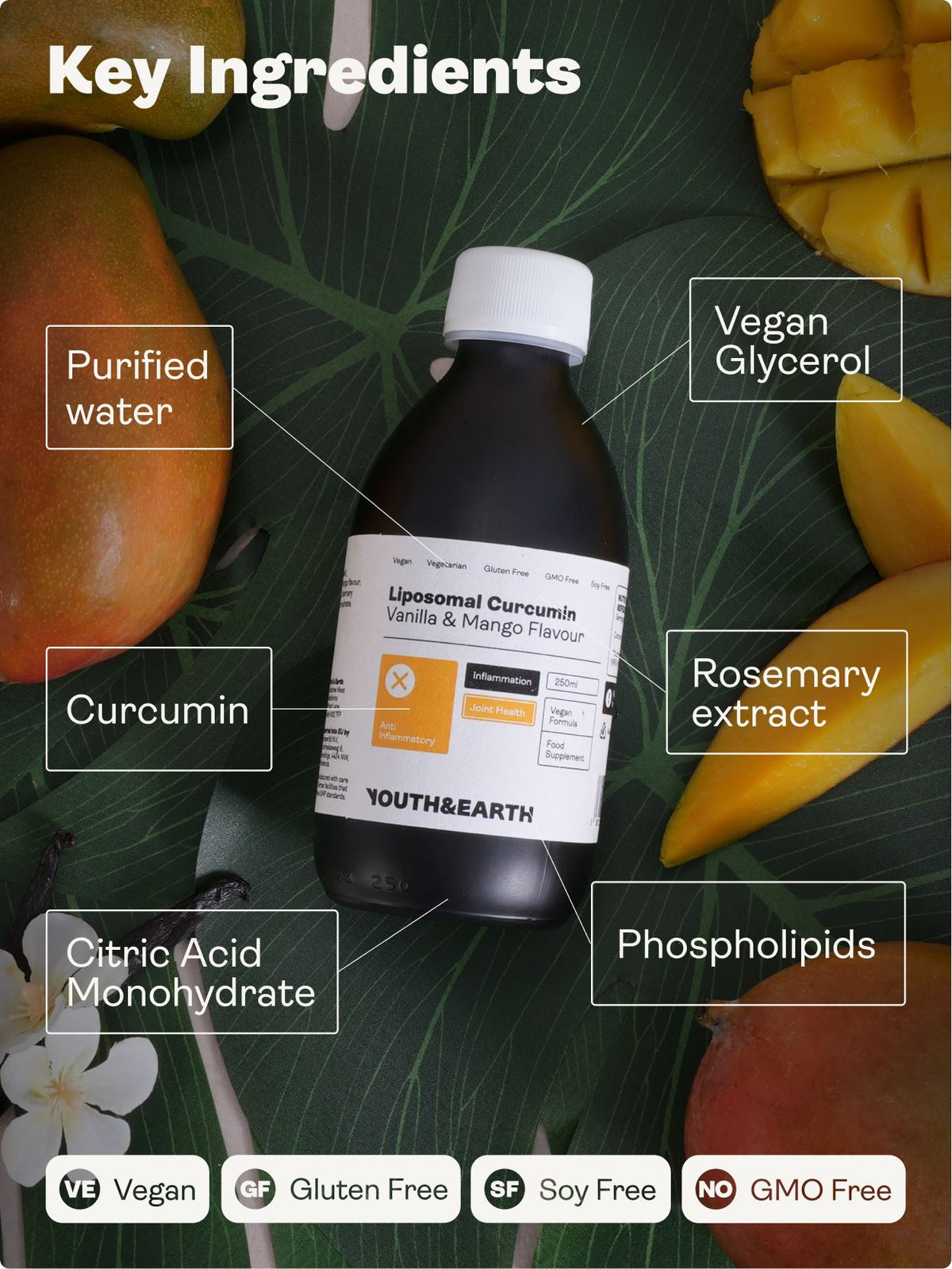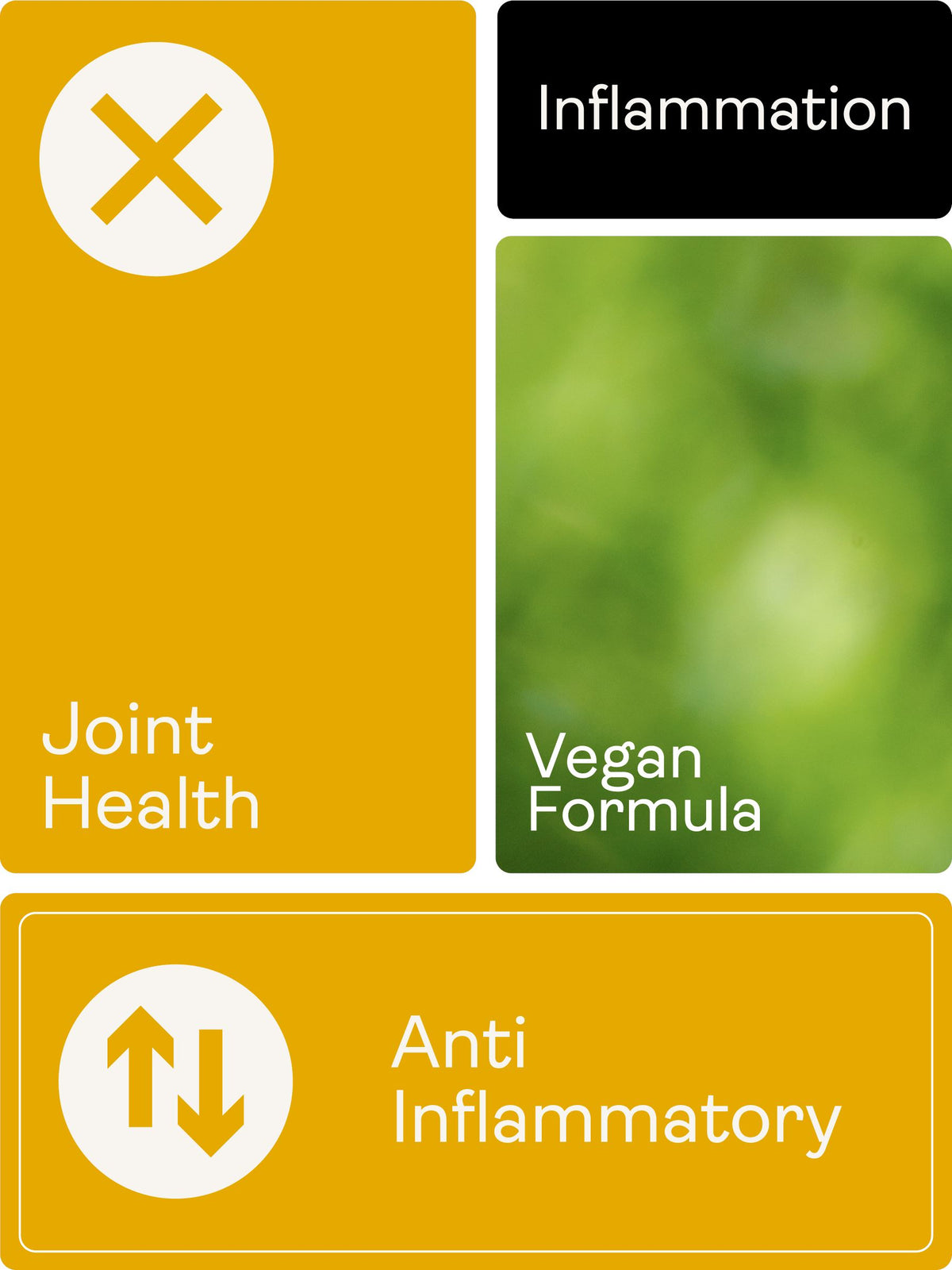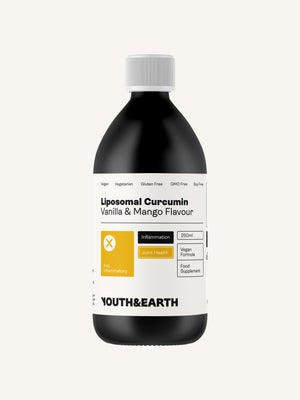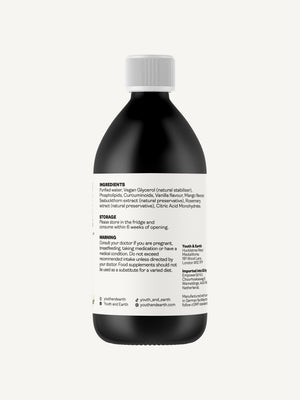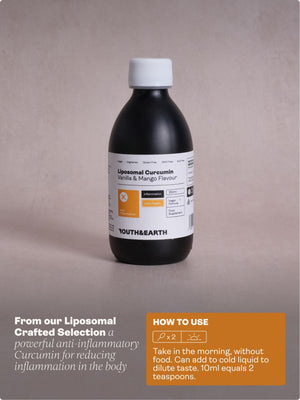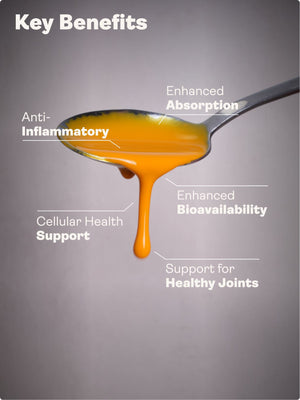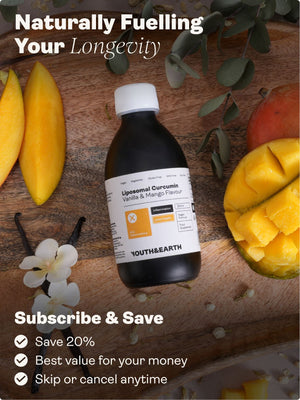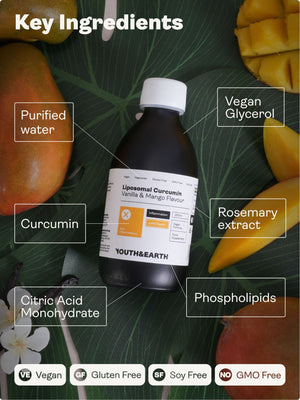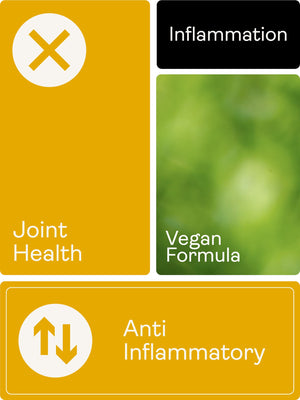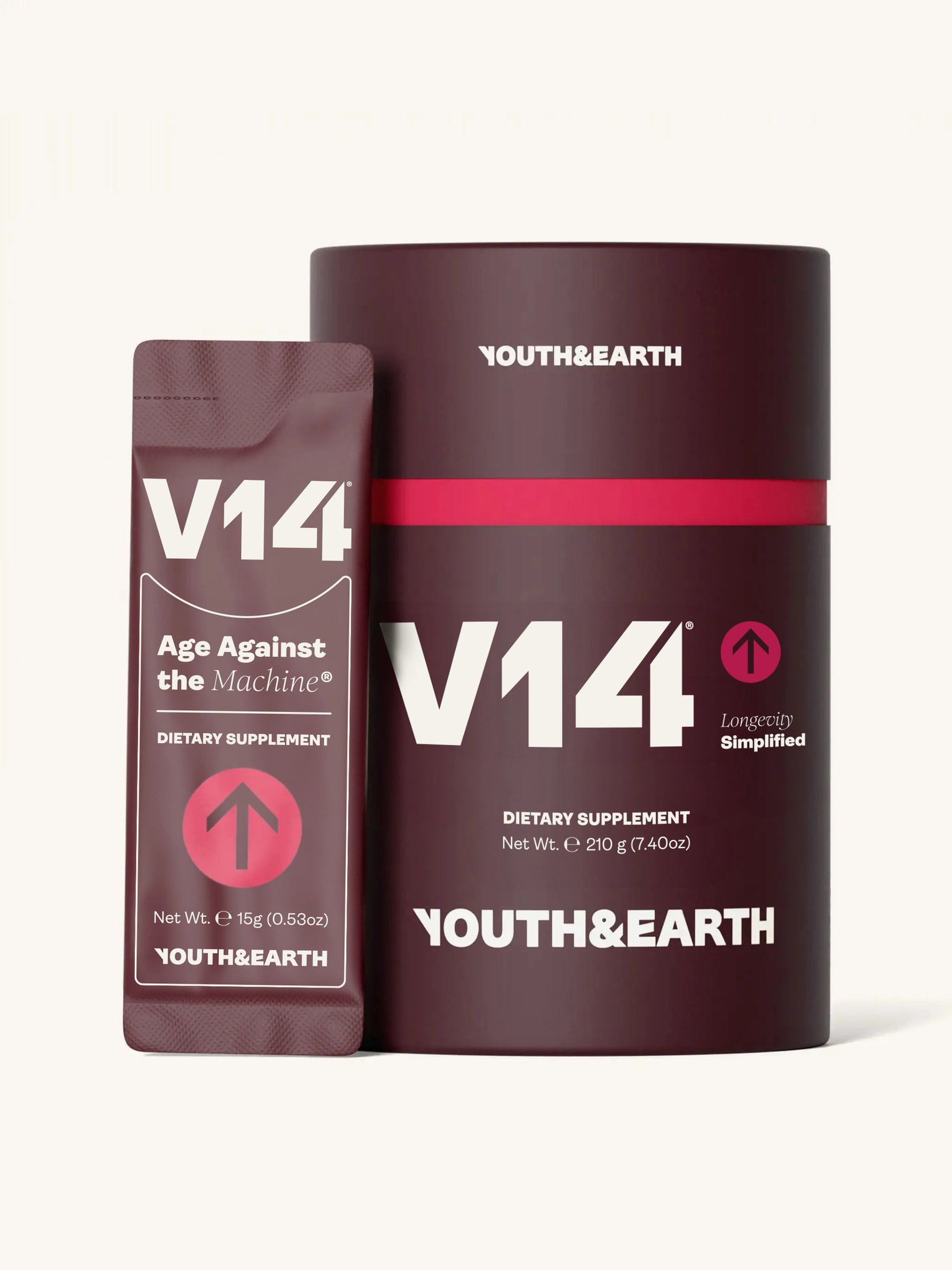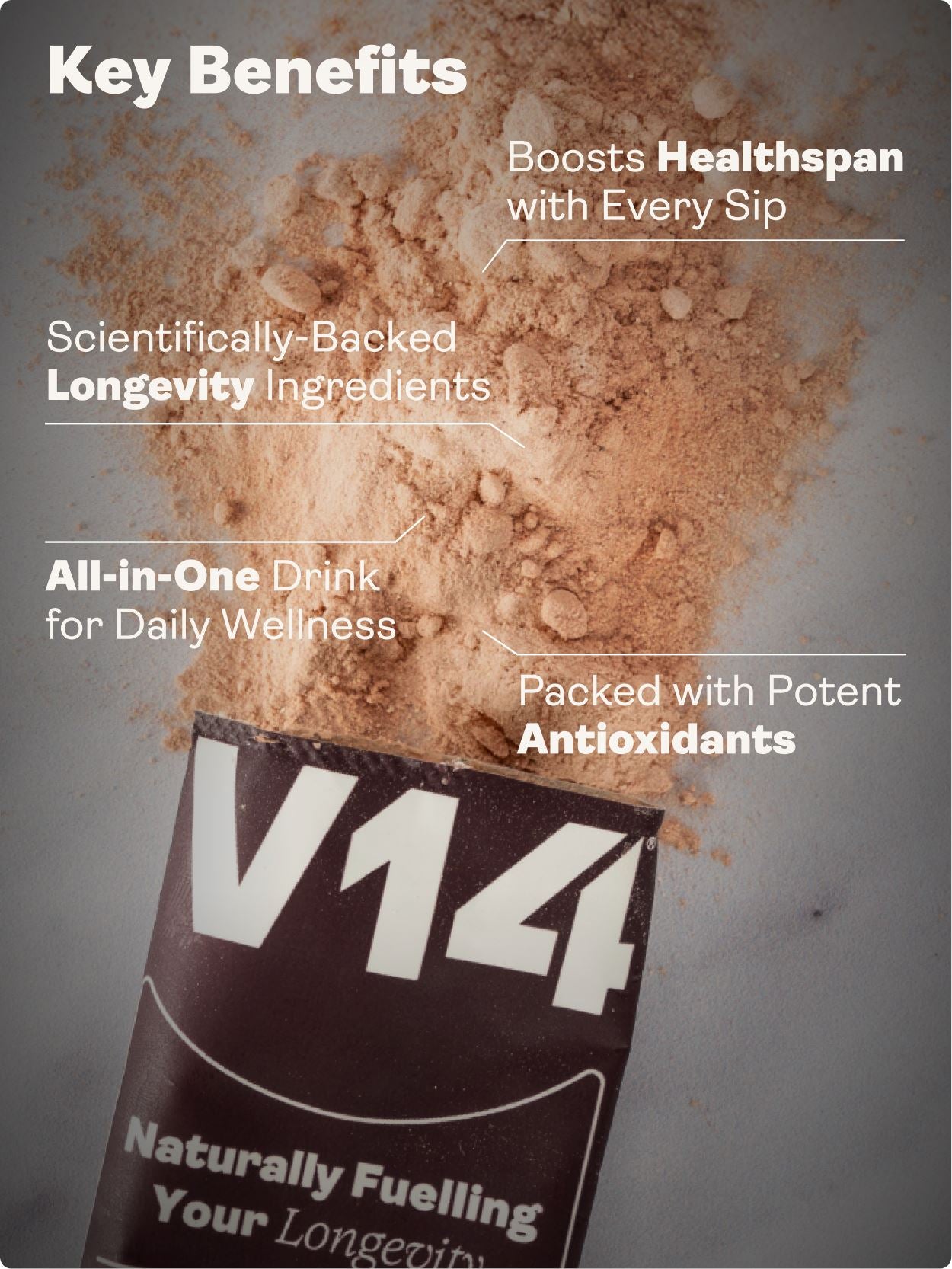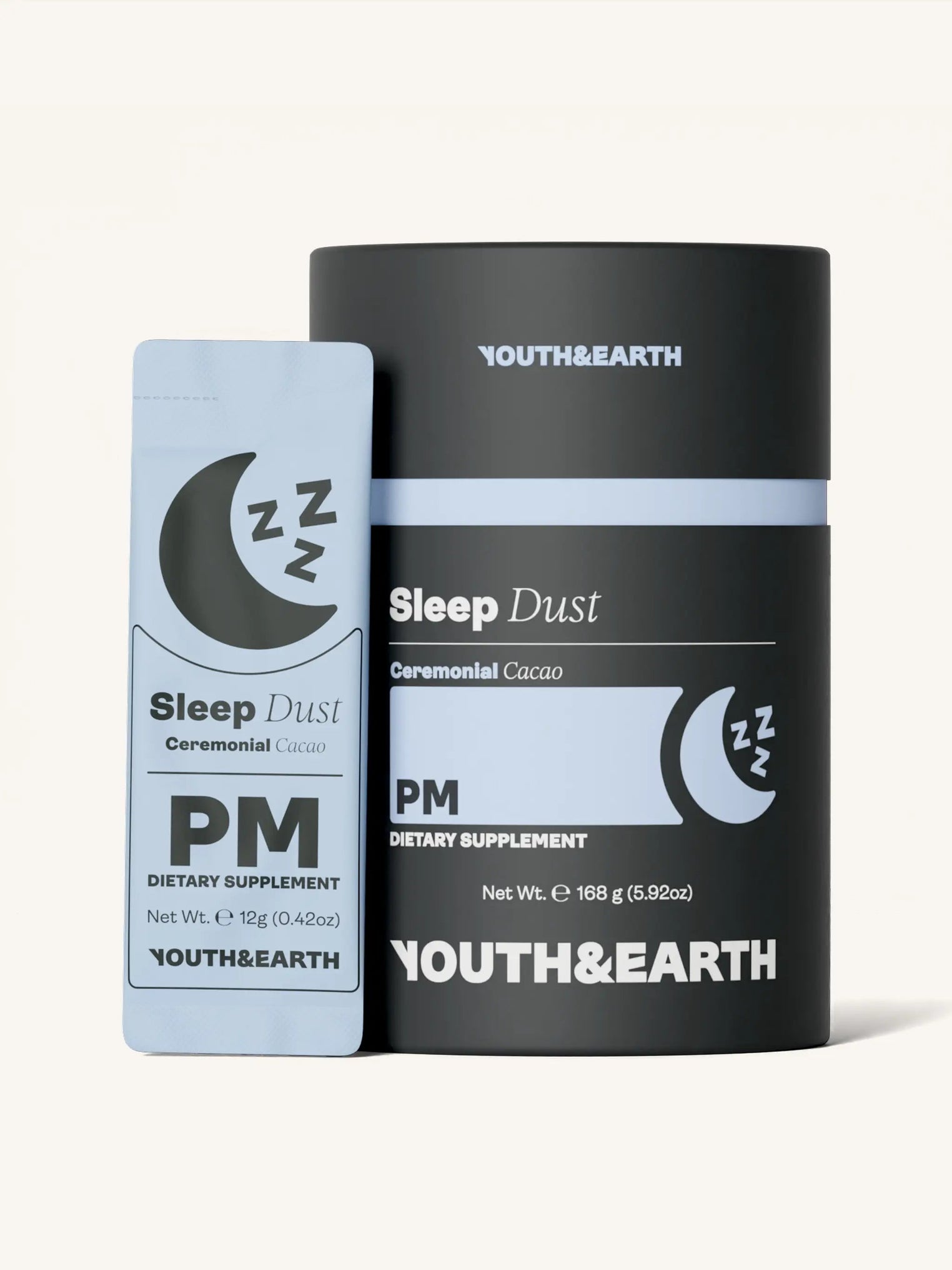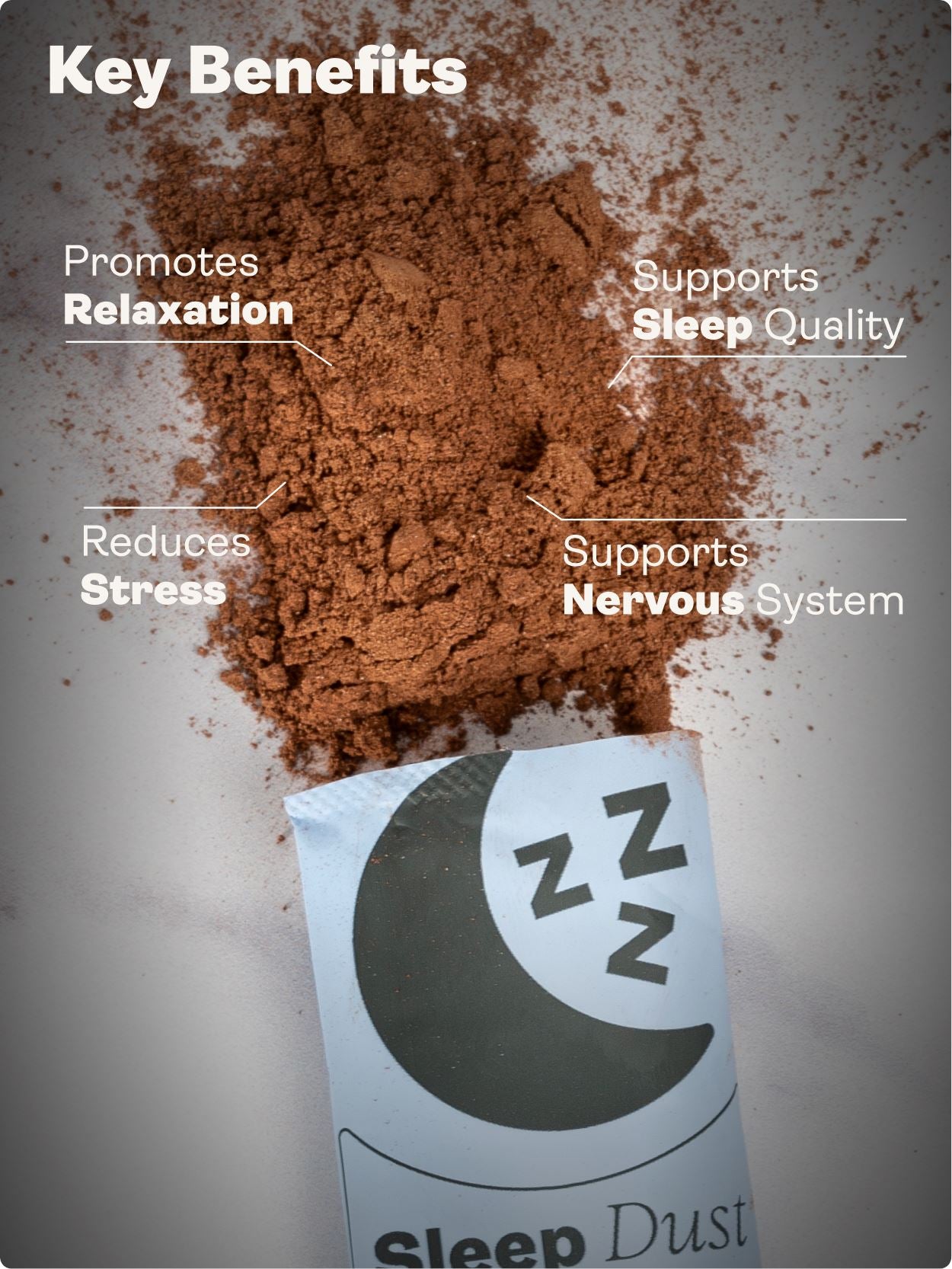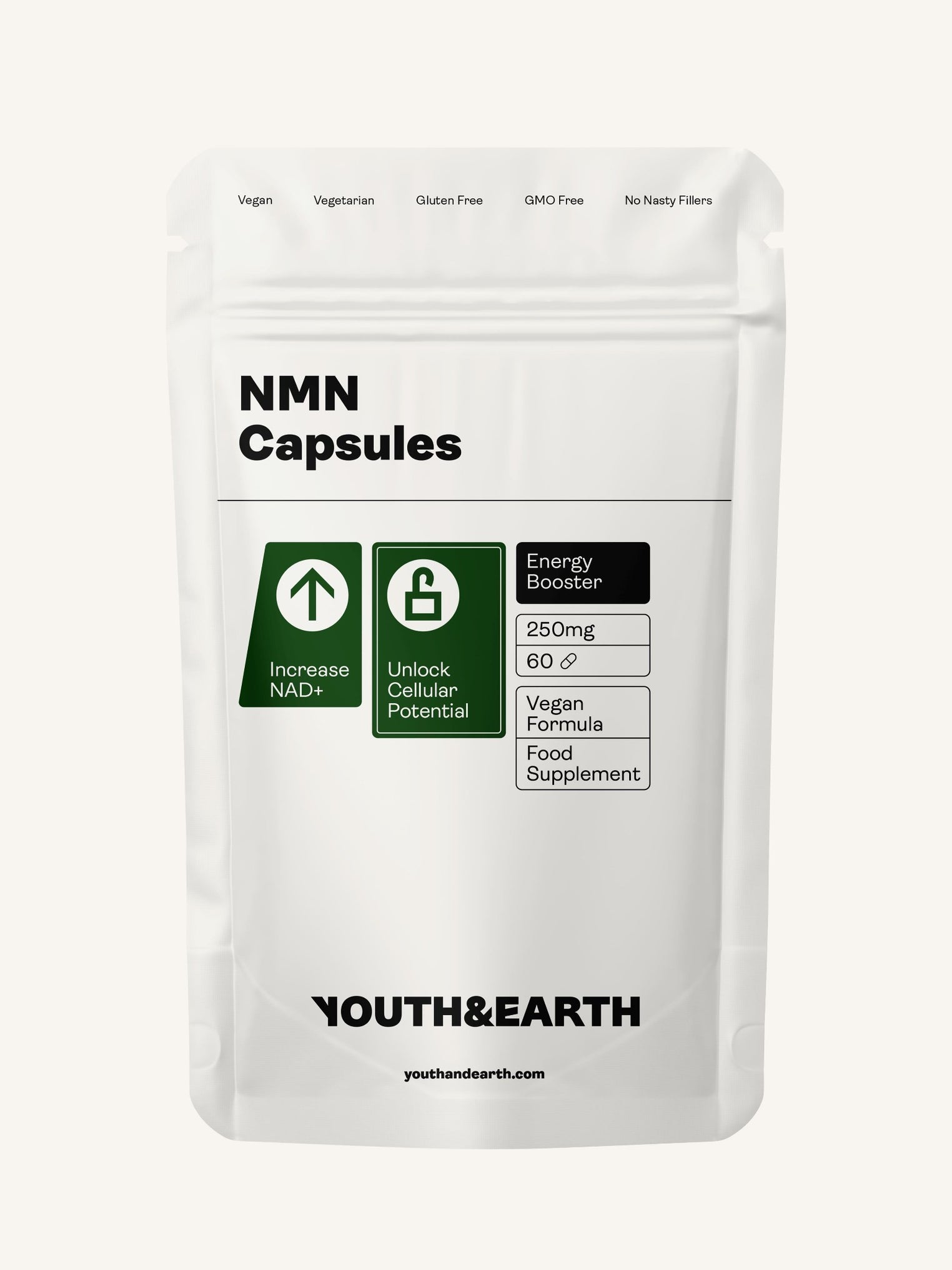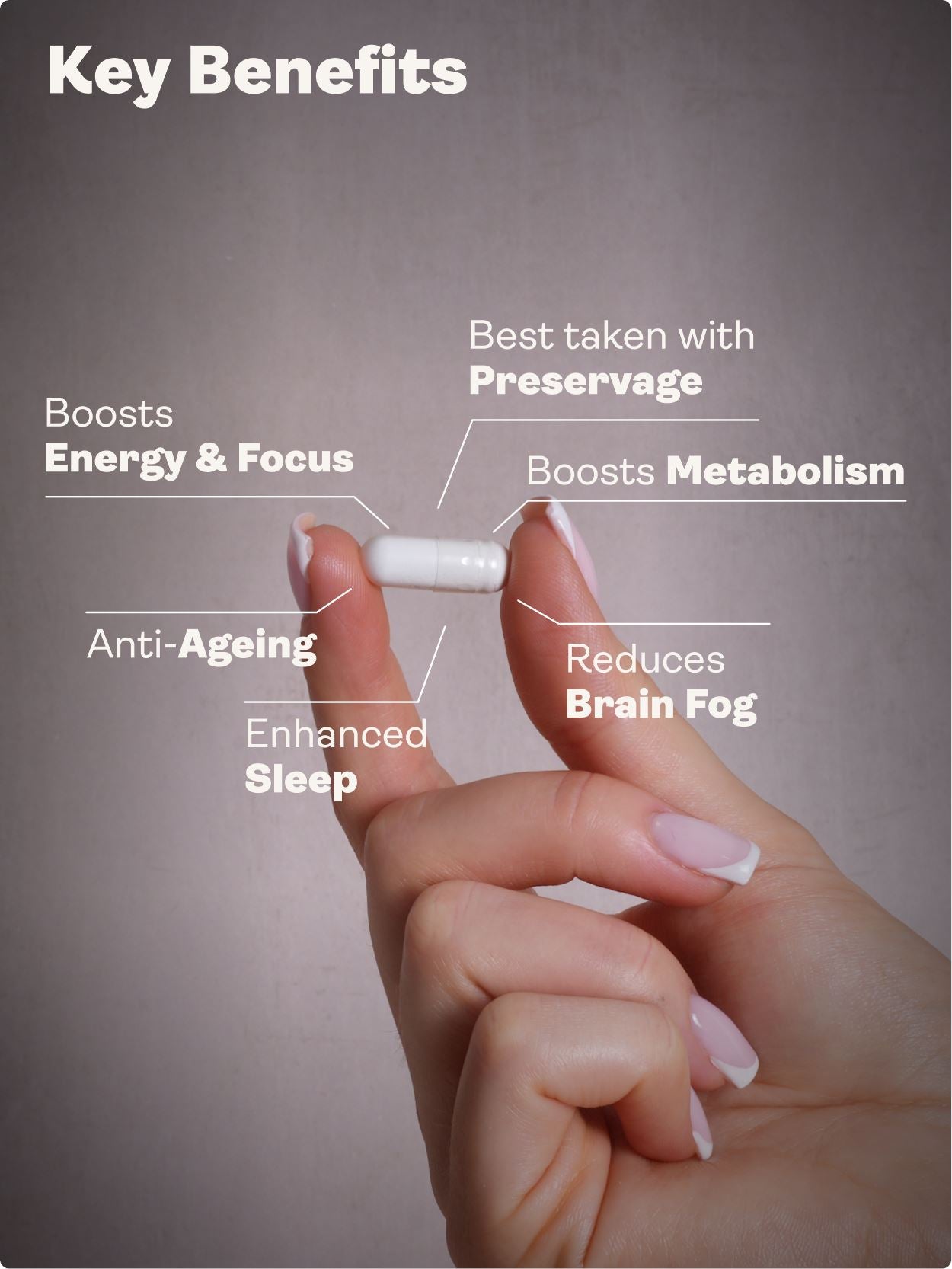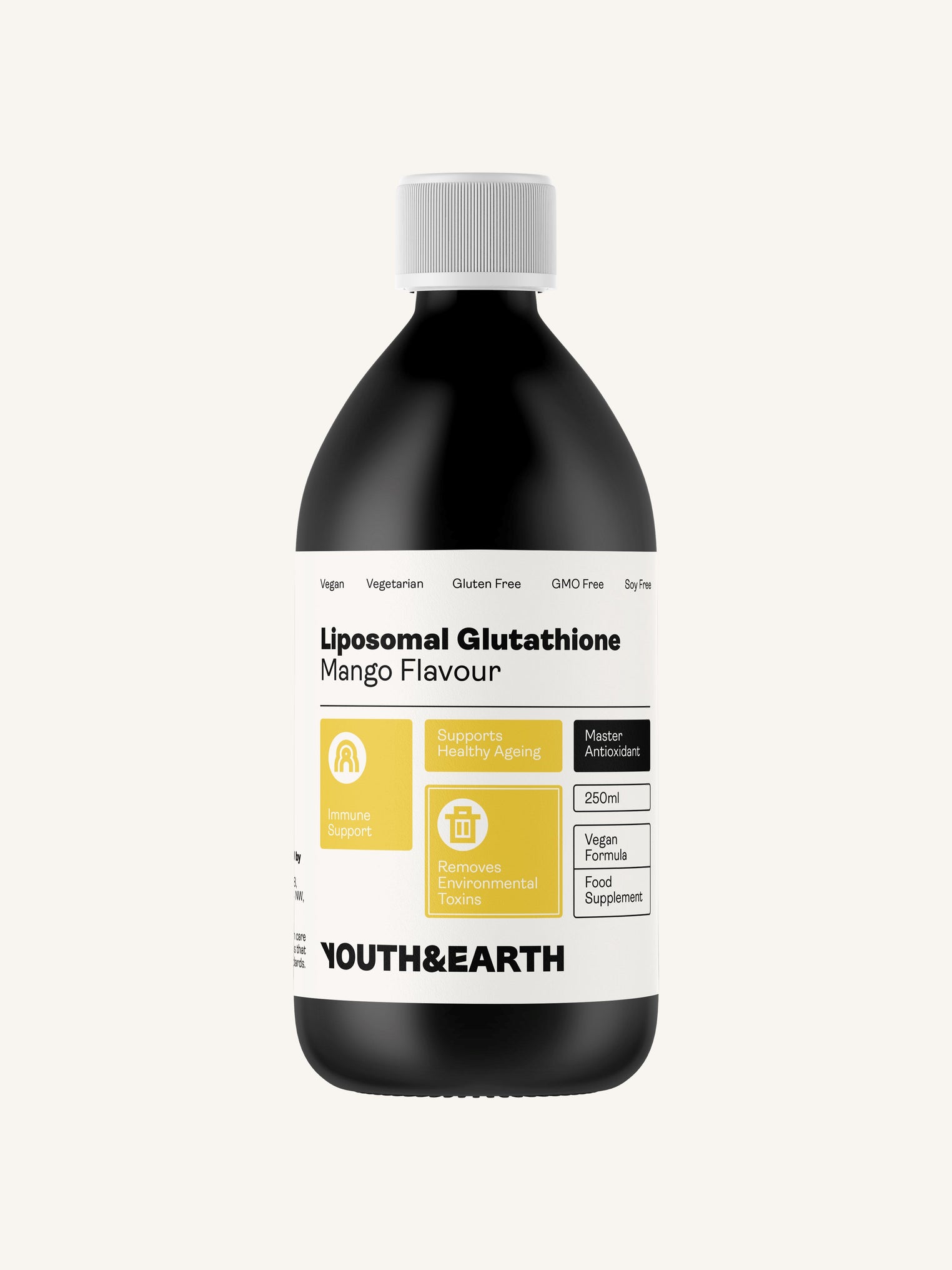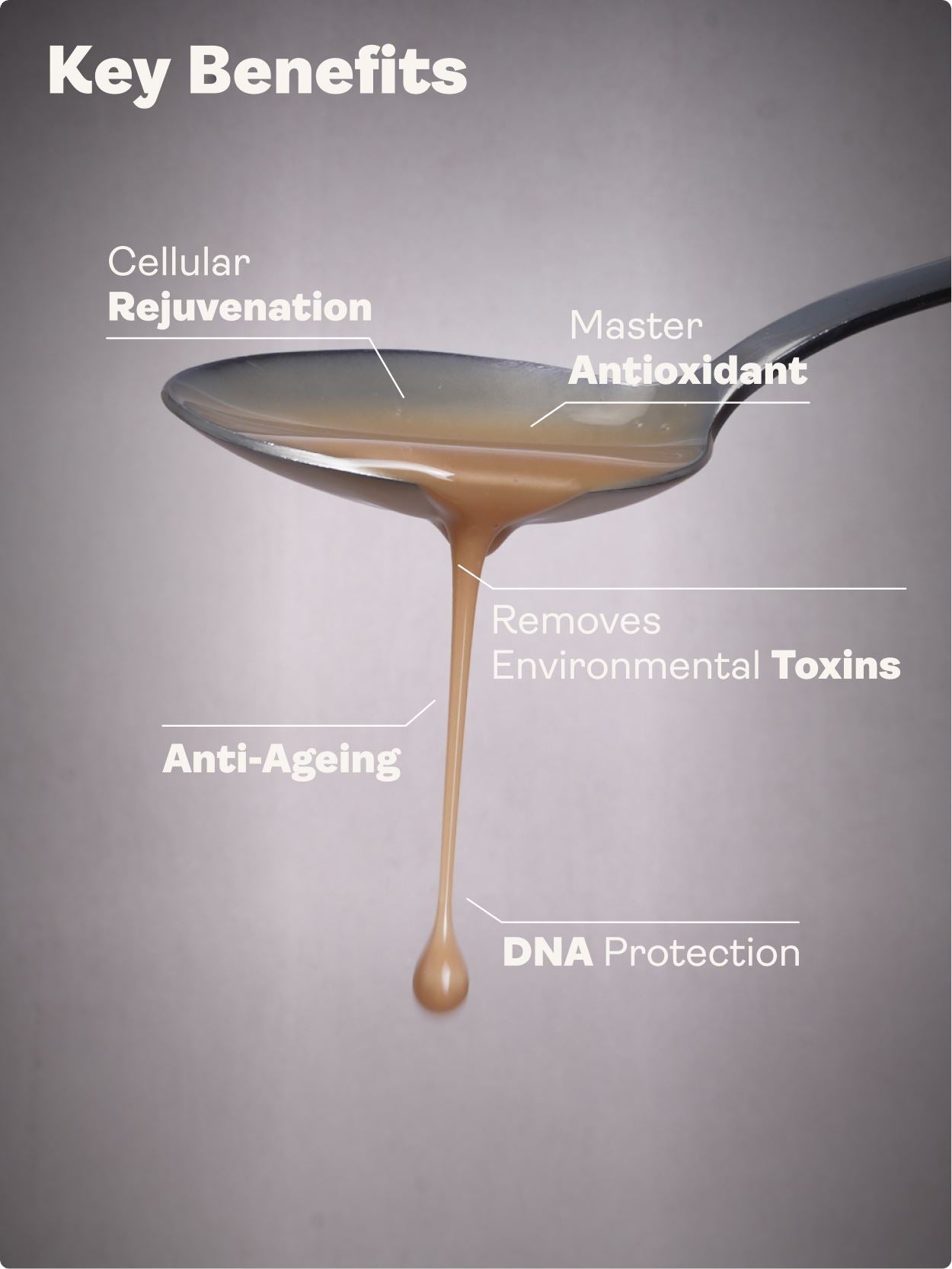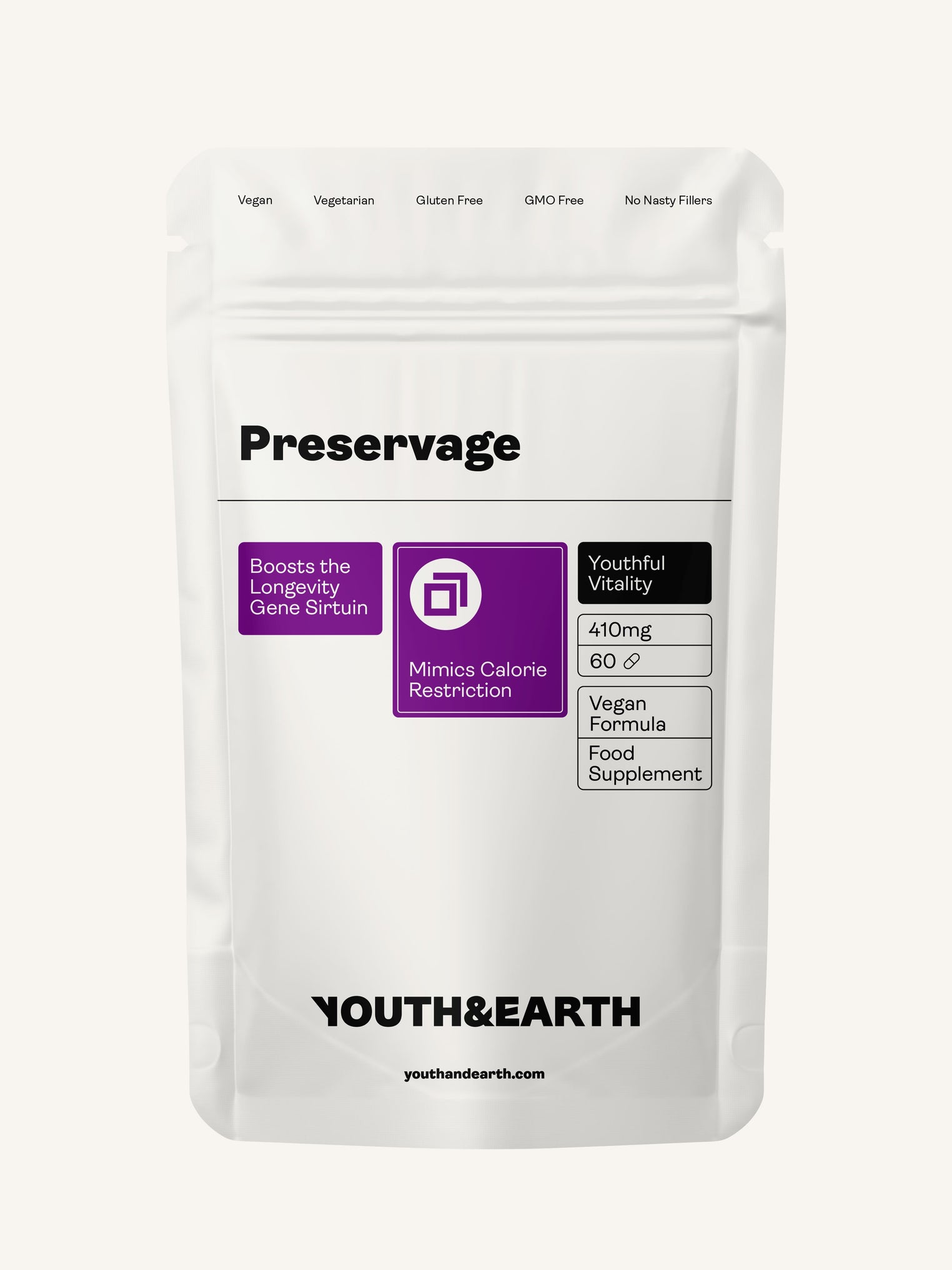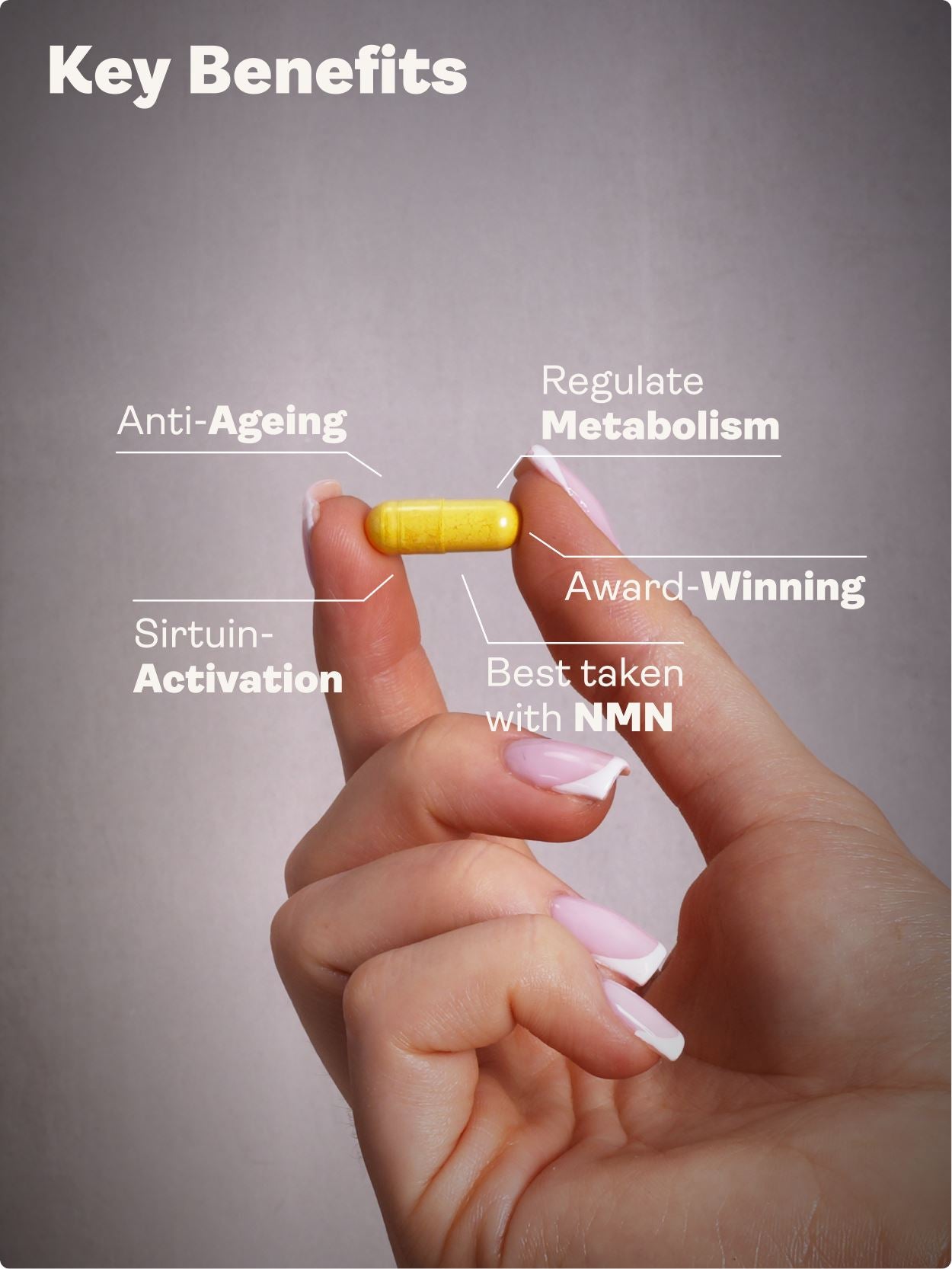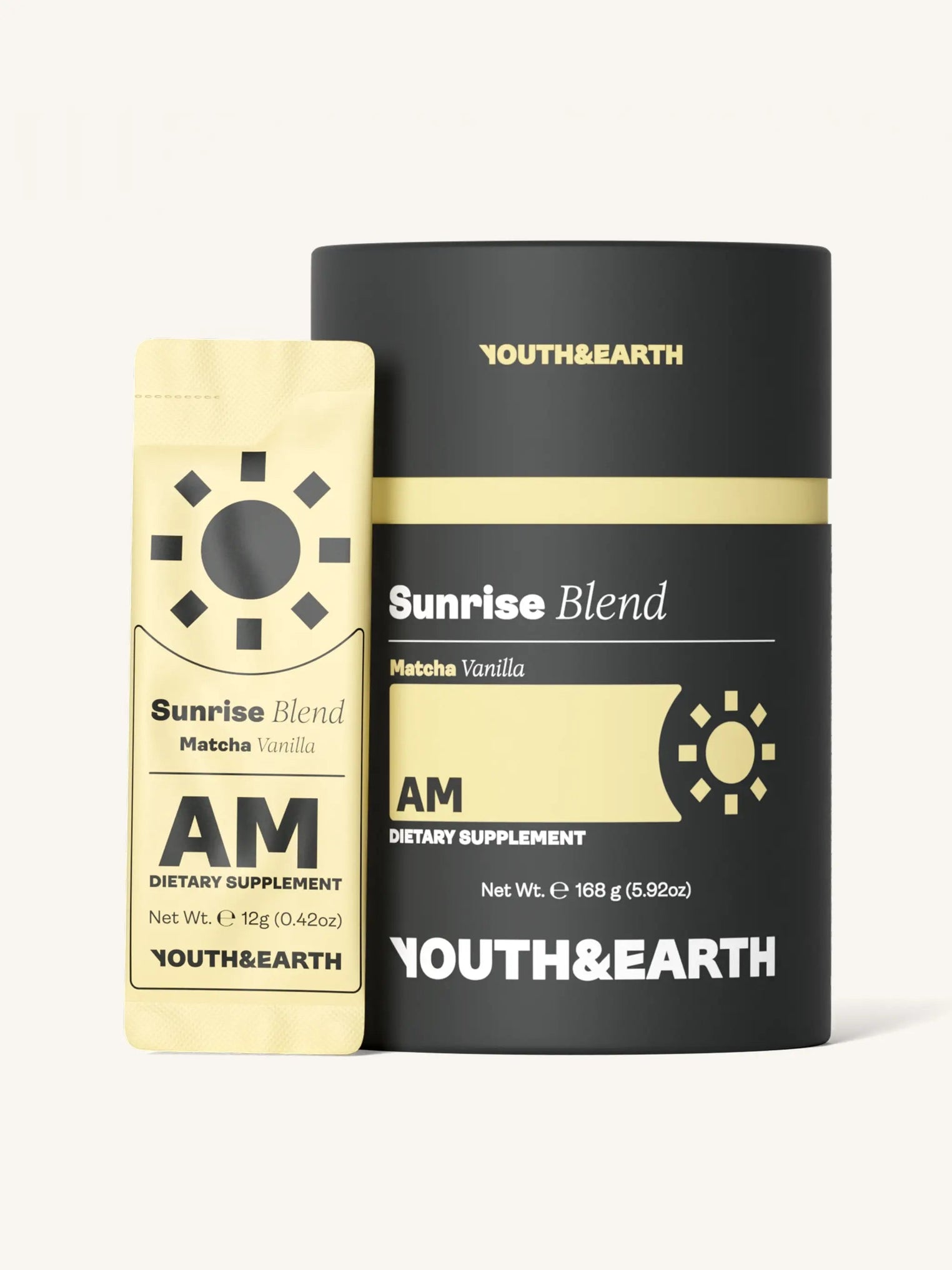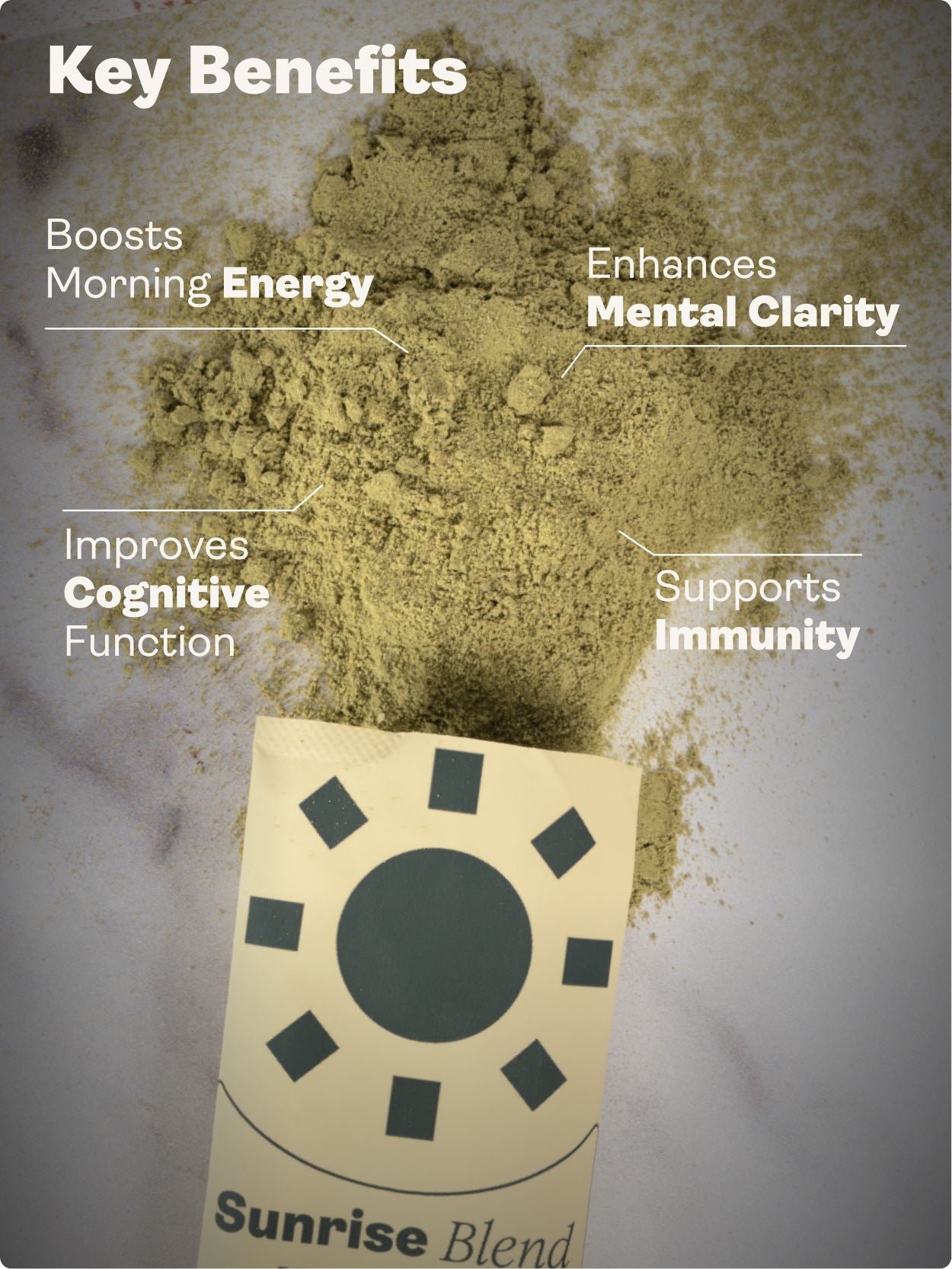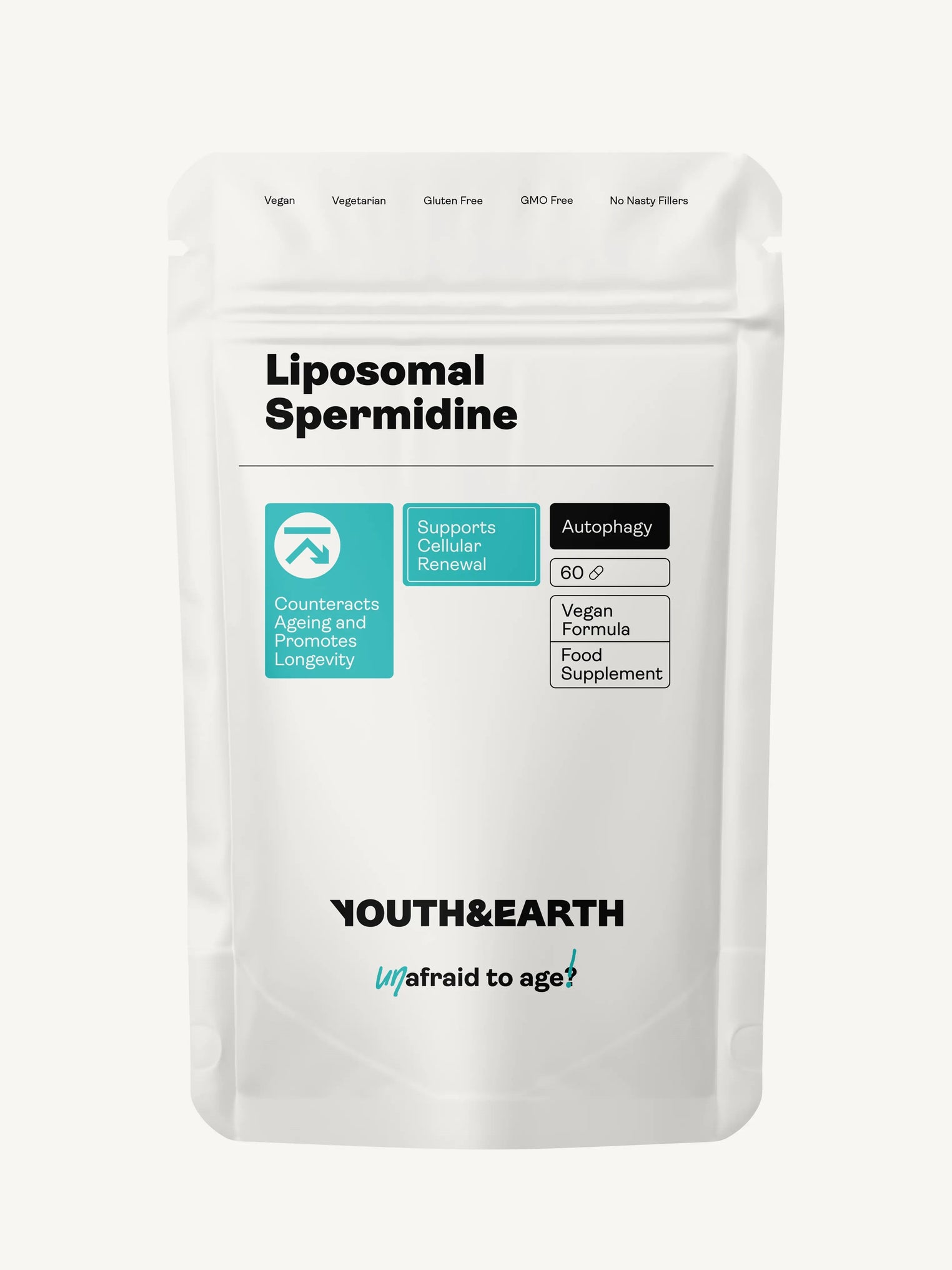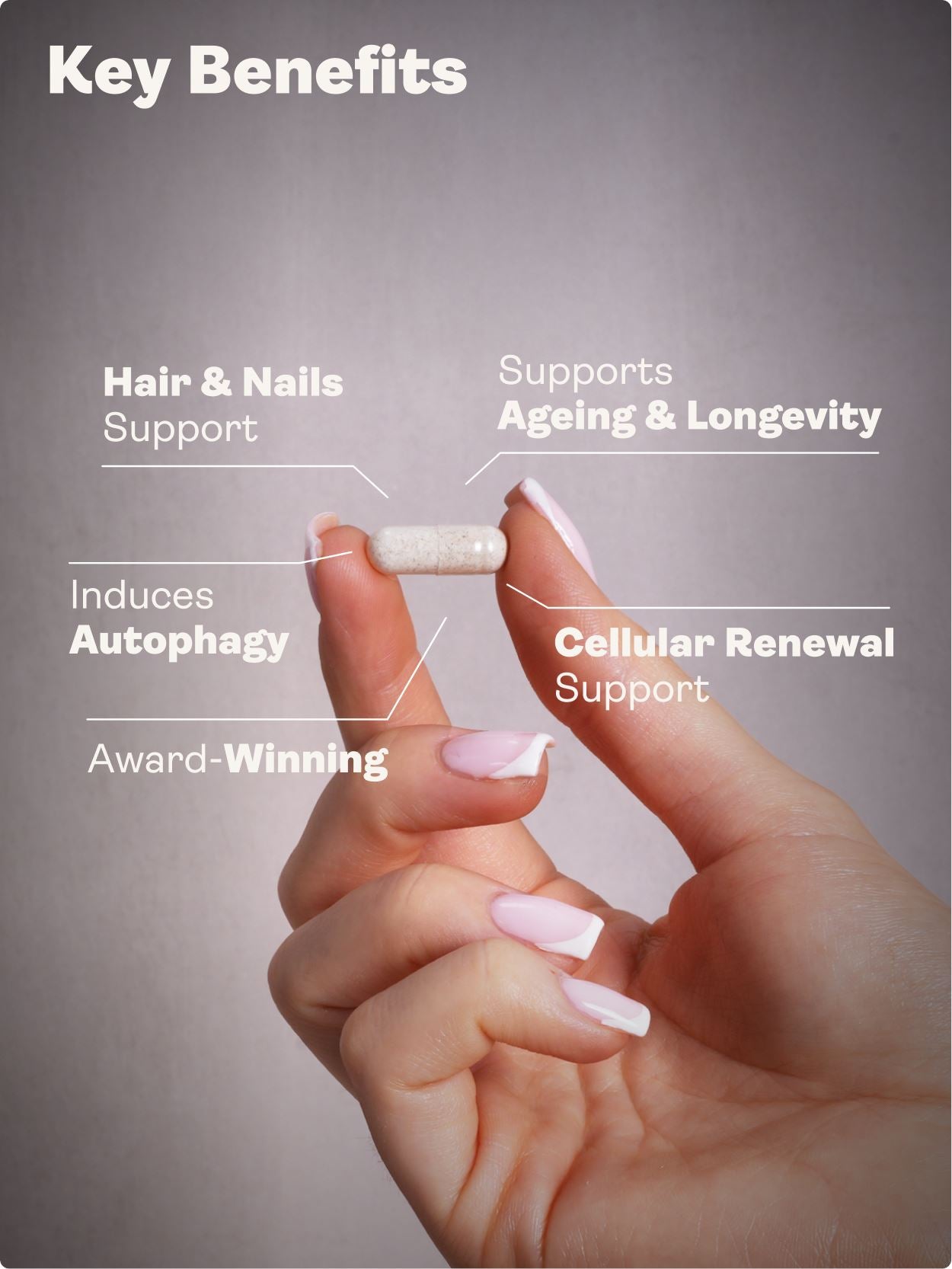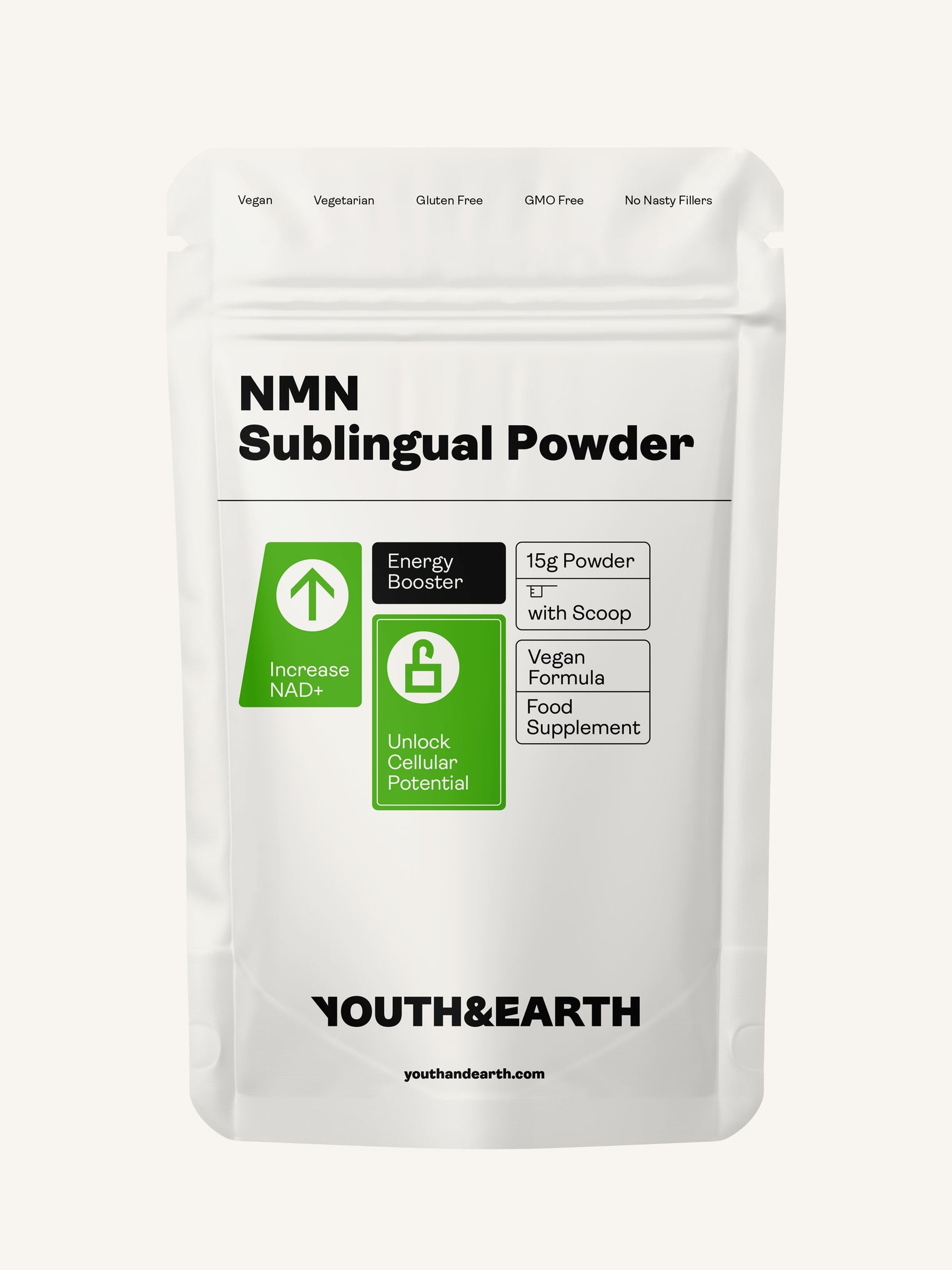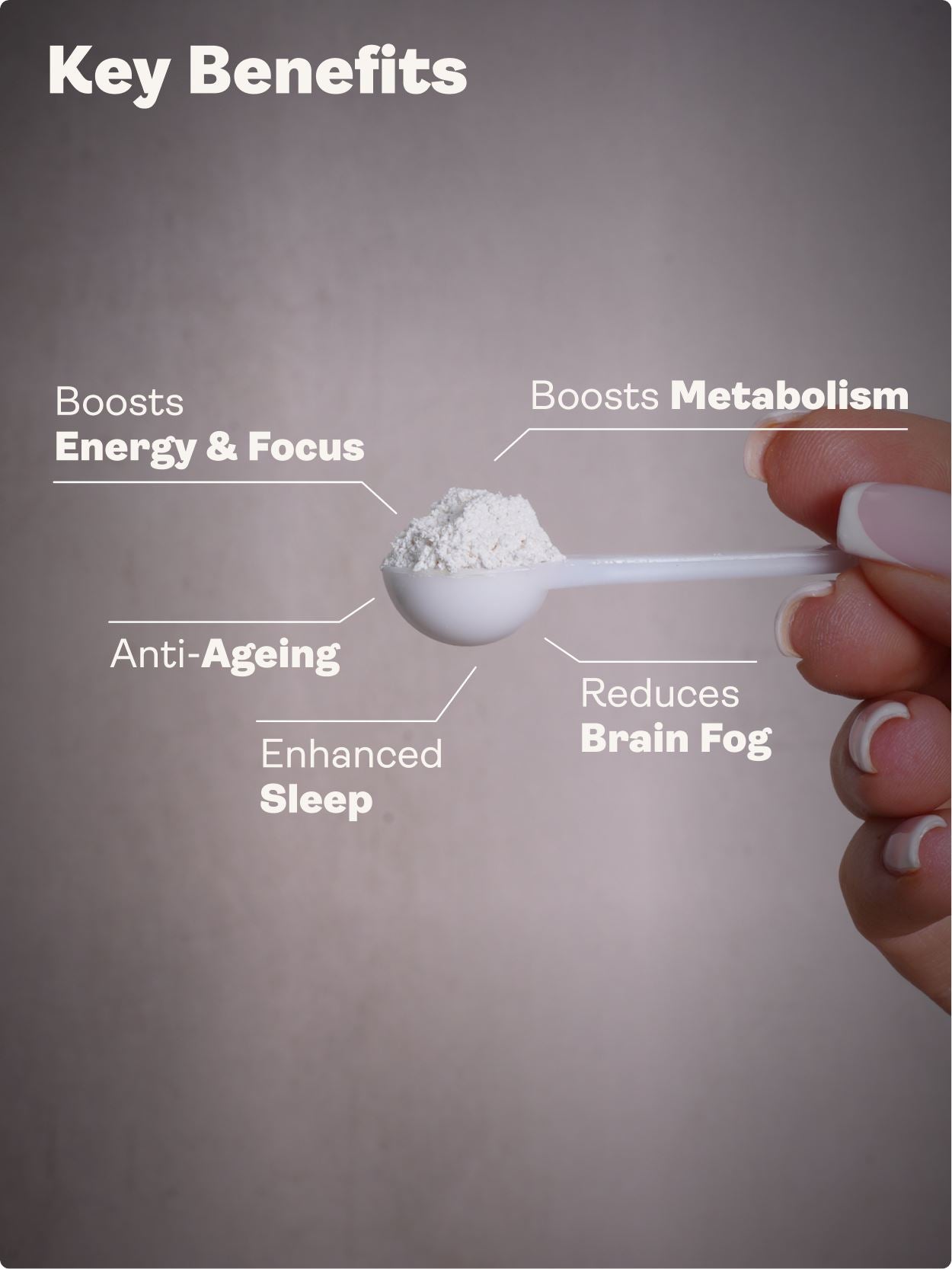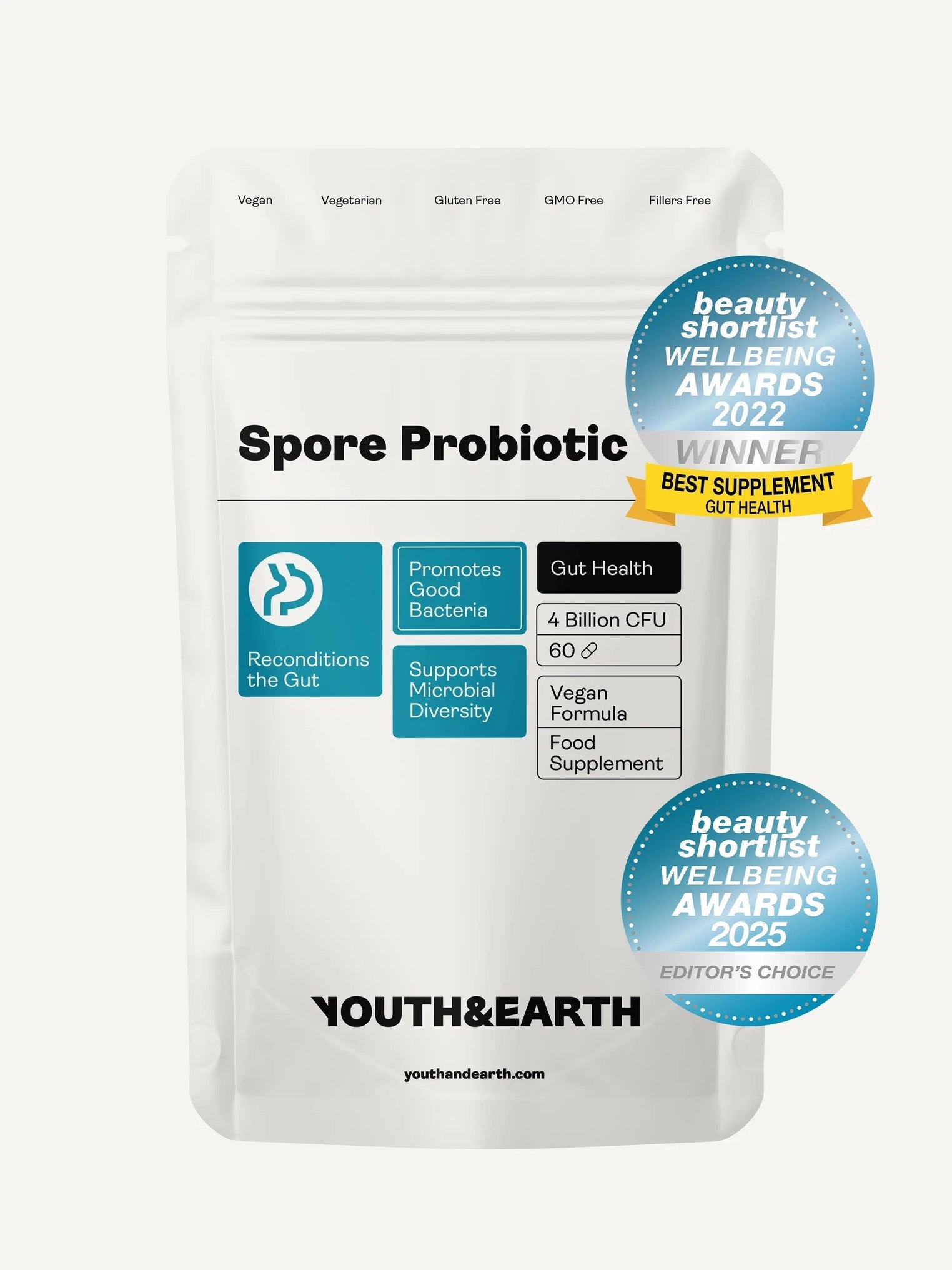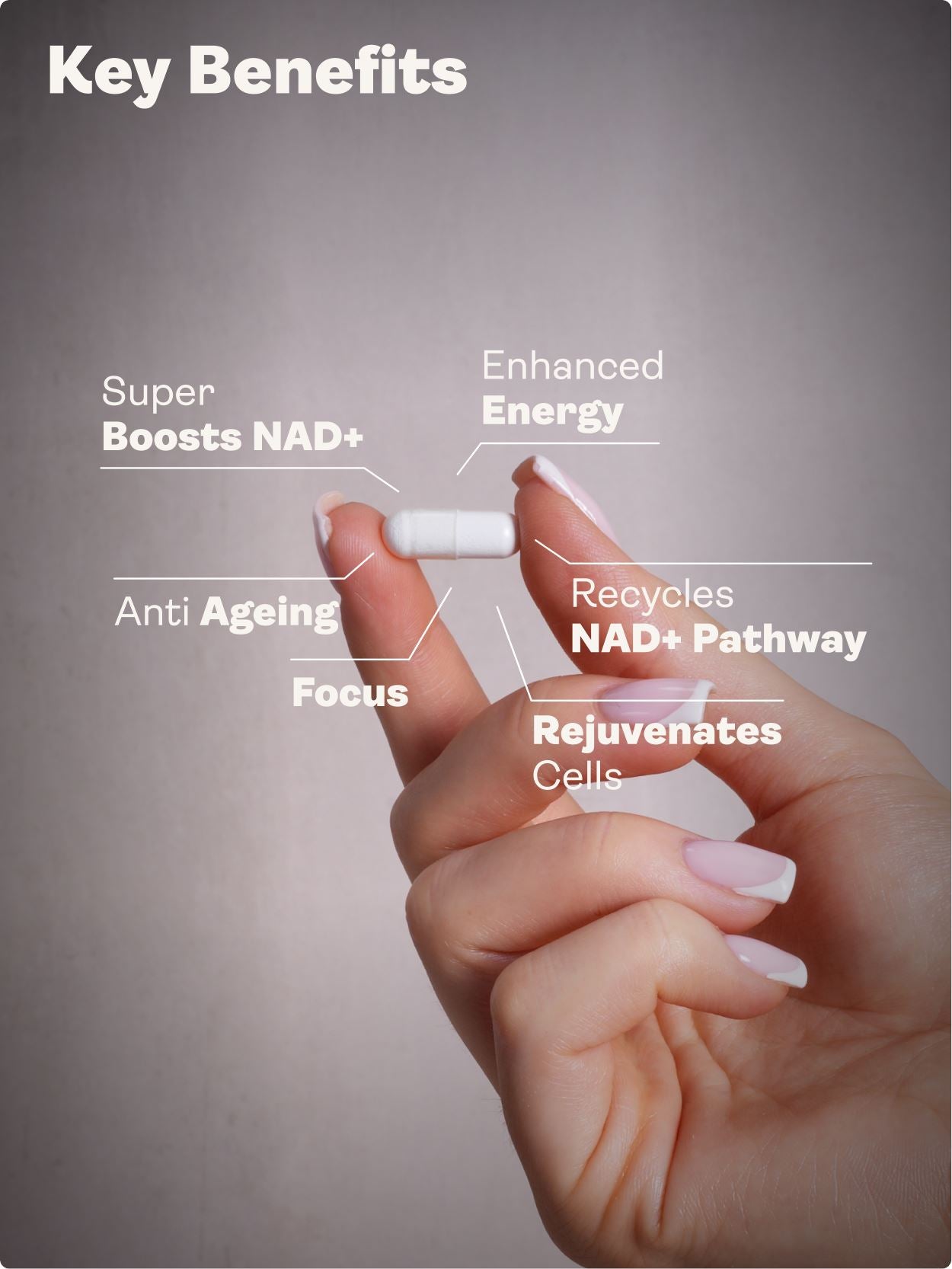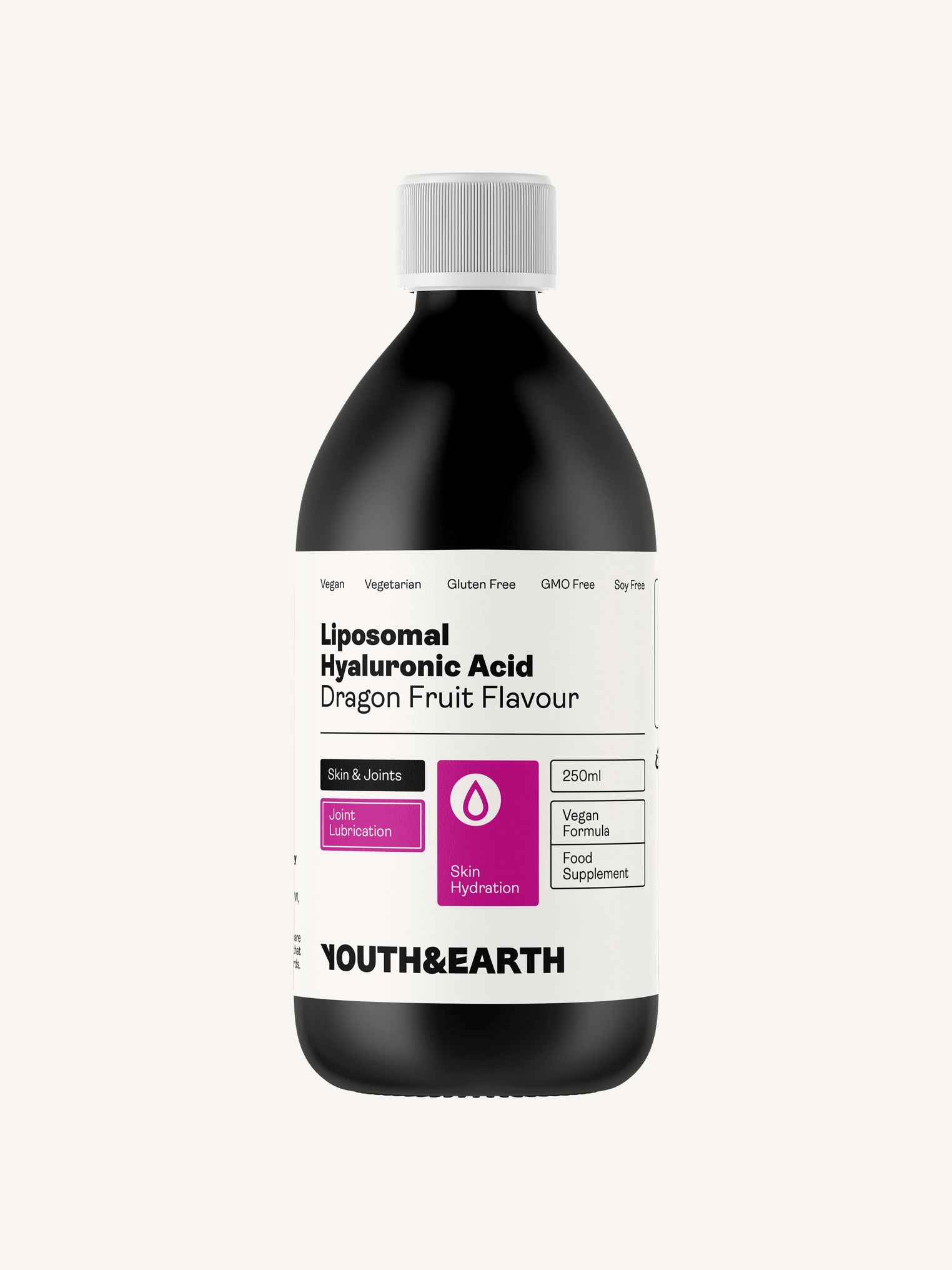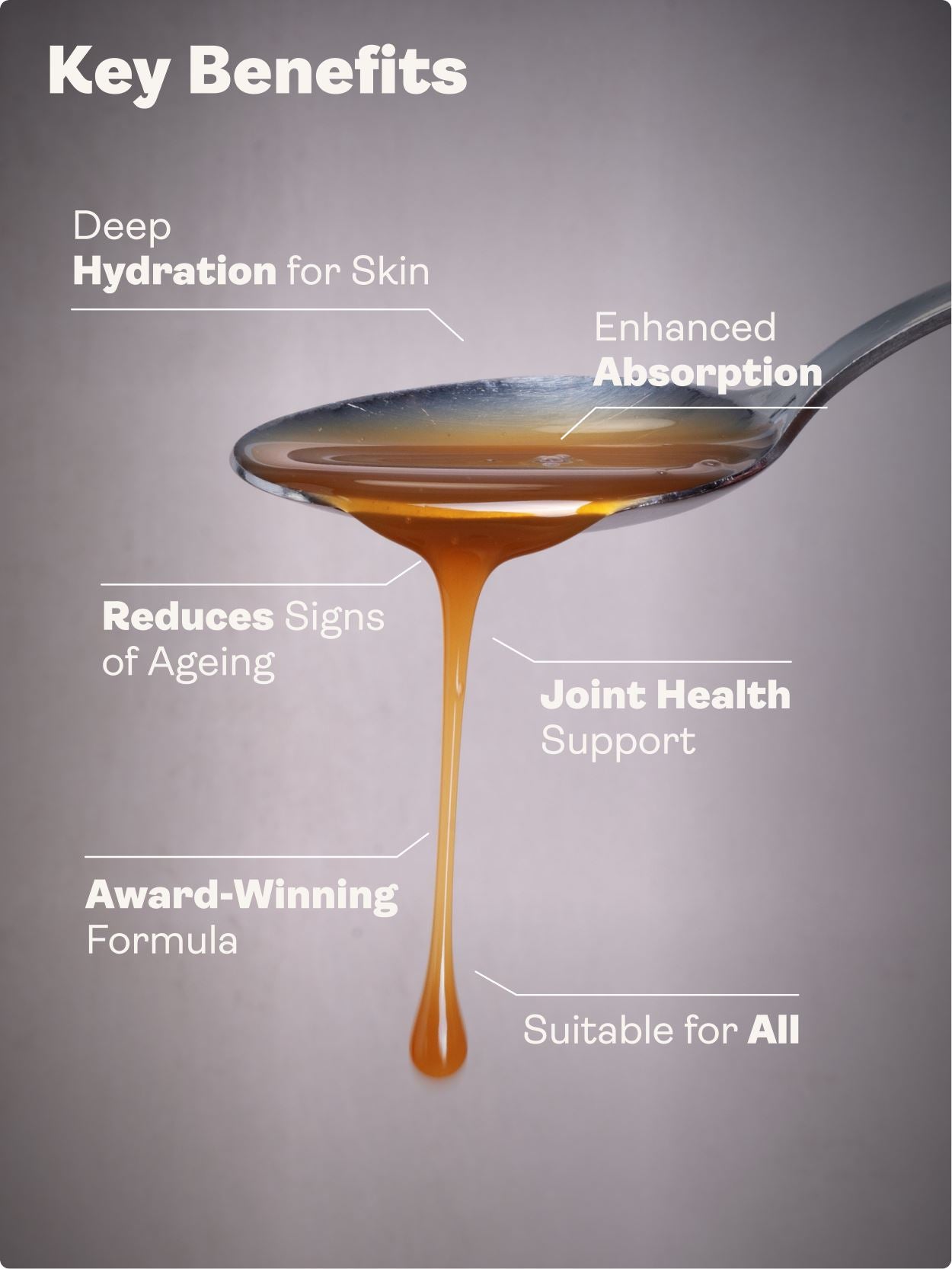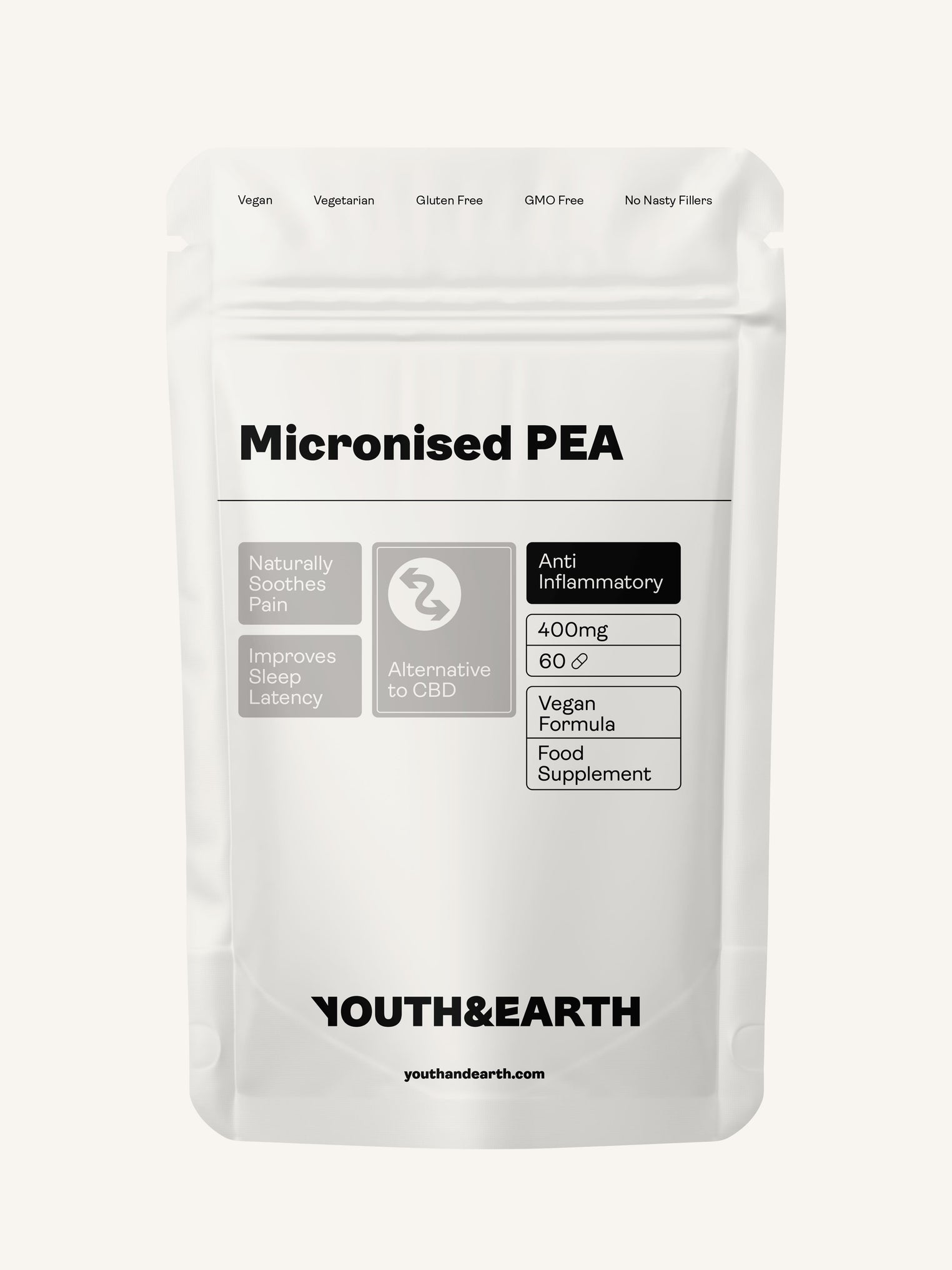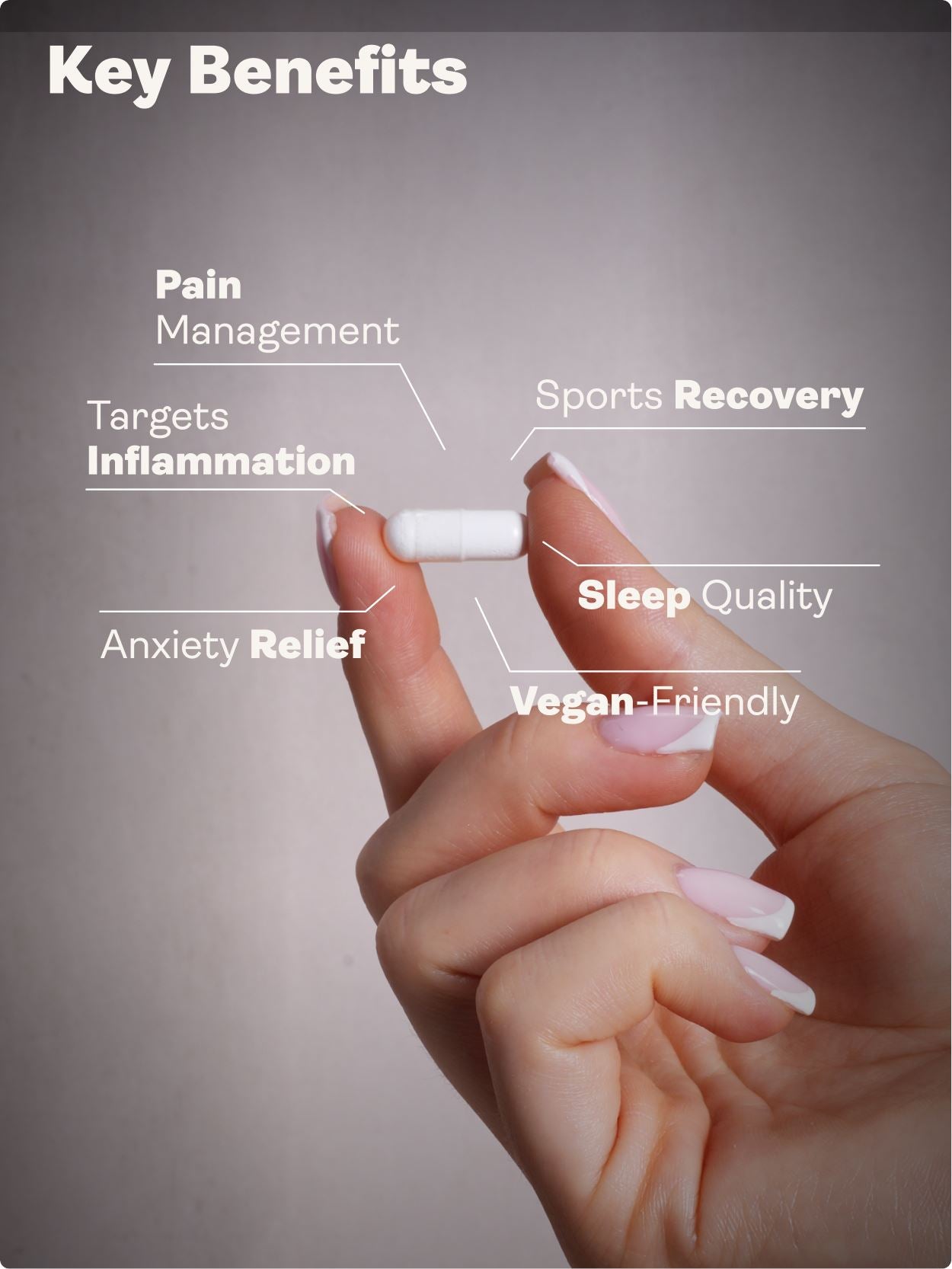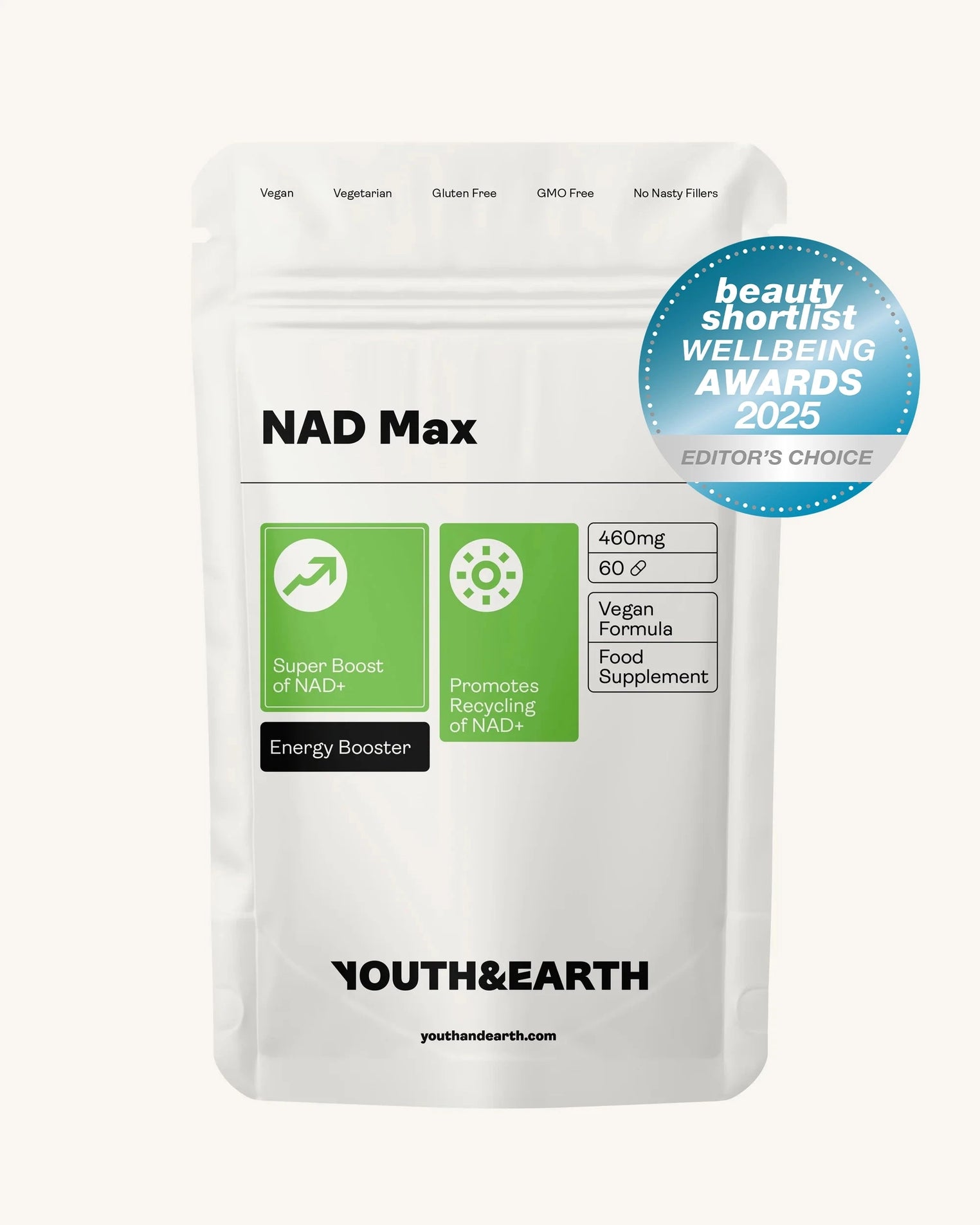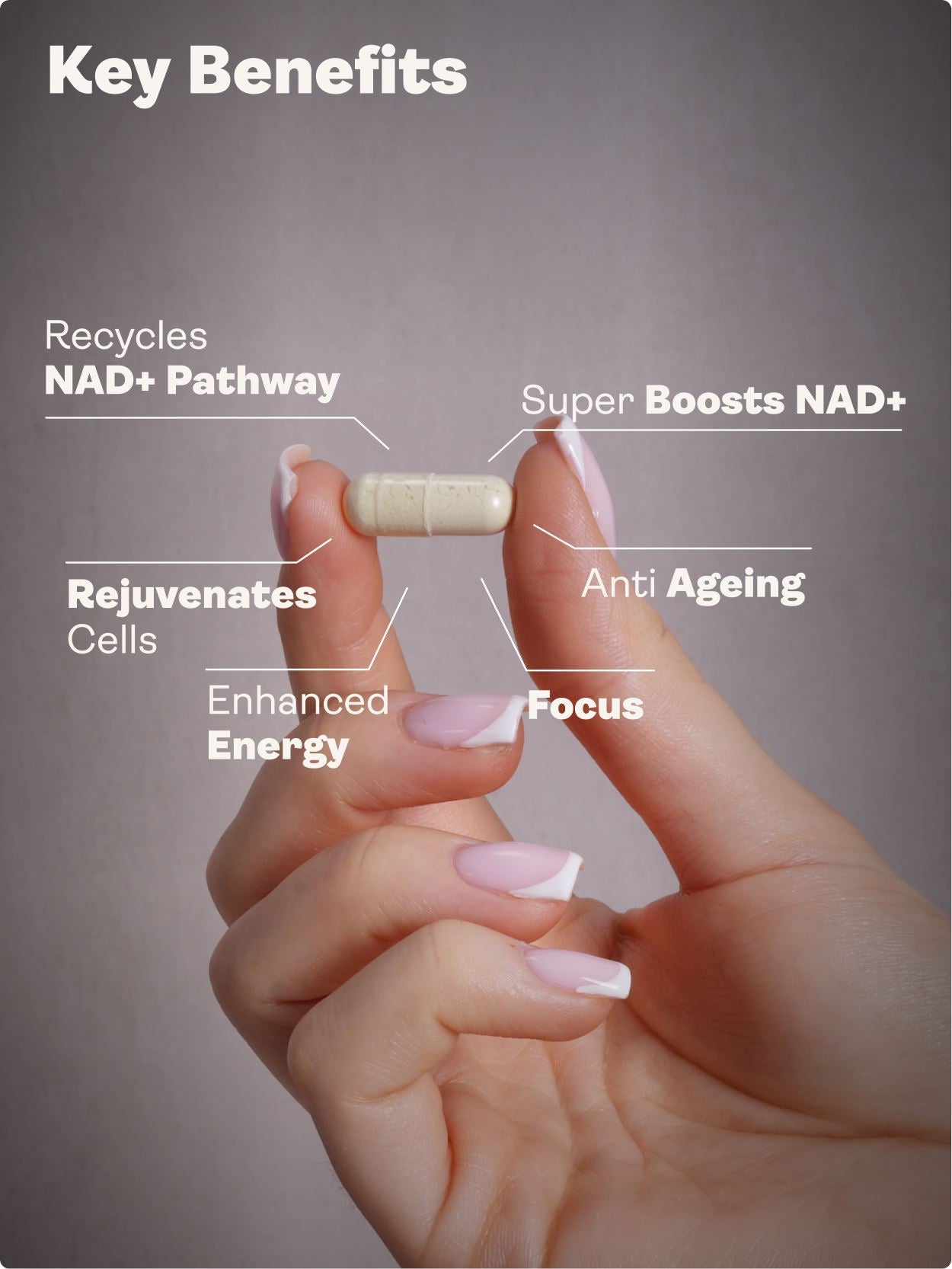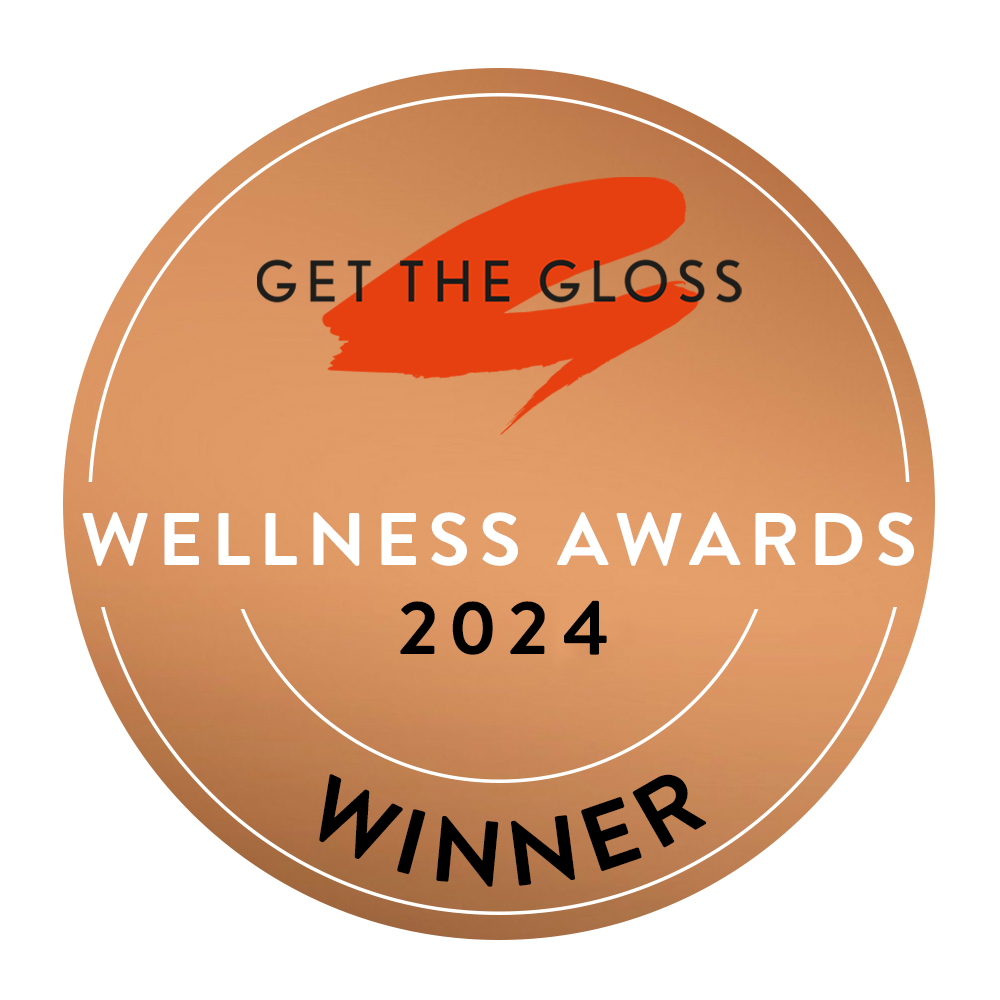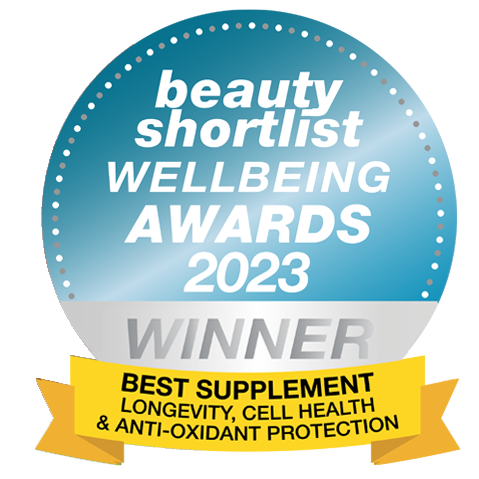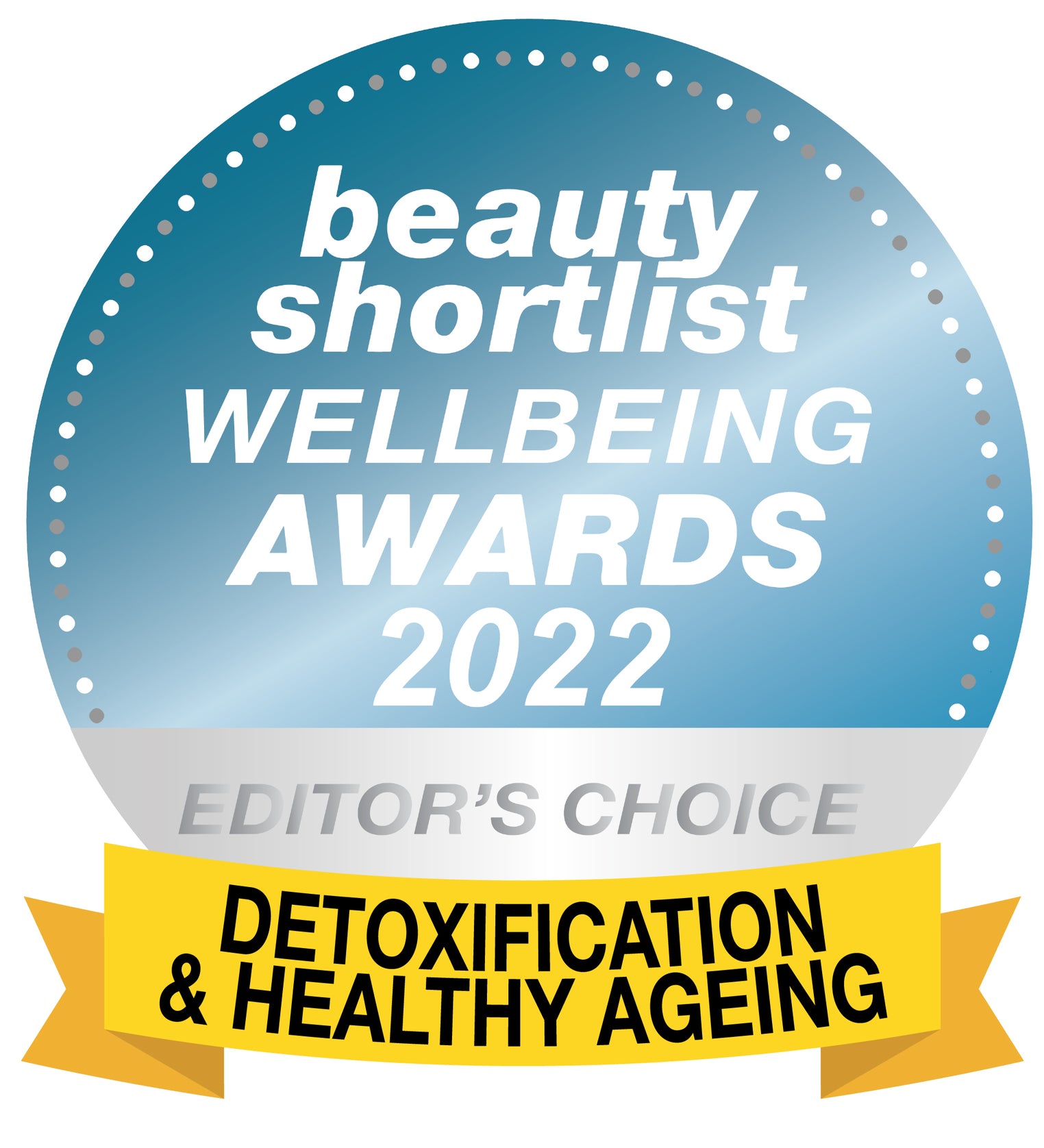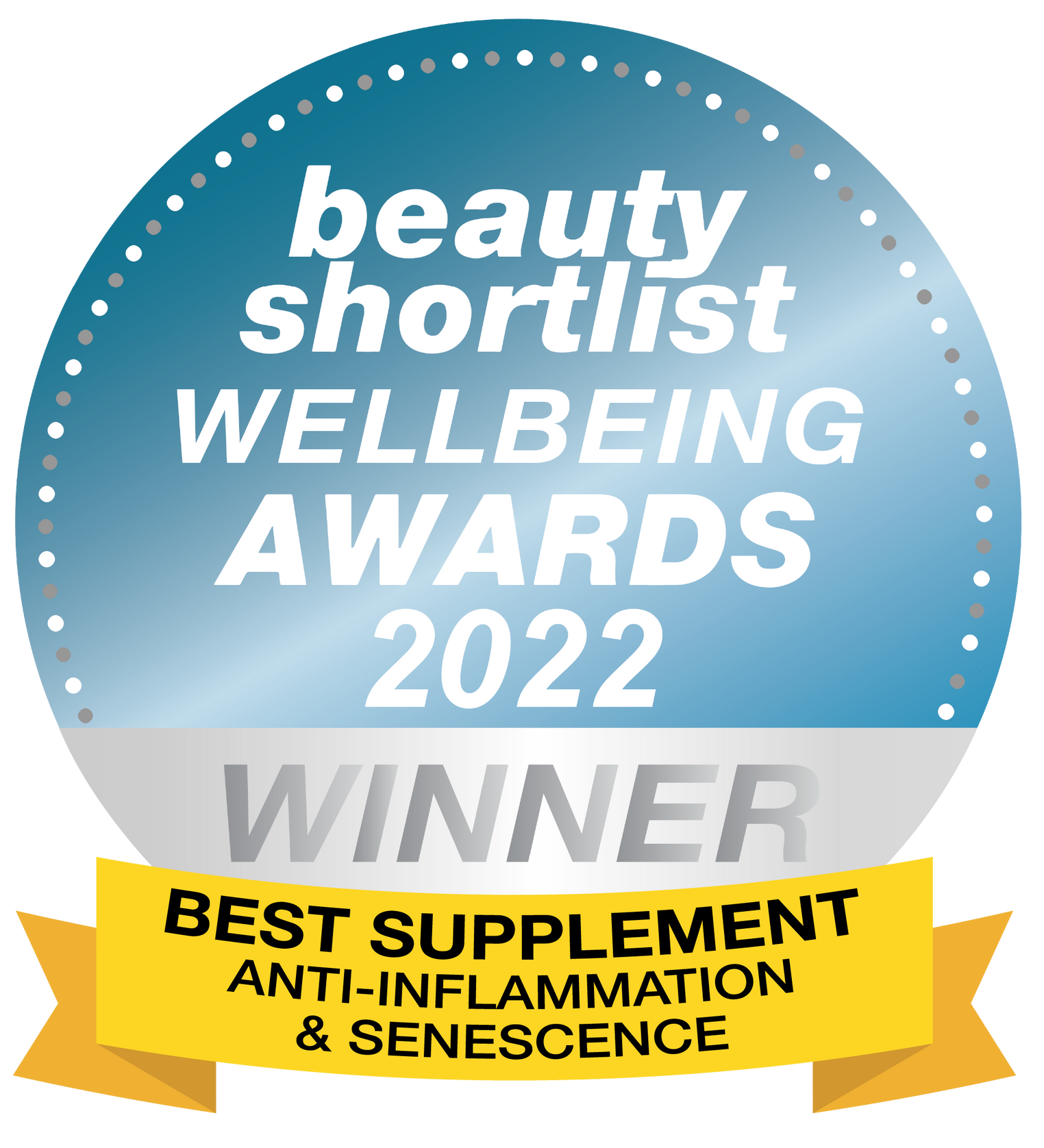Do you want a practical way to lower everyday inflammation while supporting long-term health and performance?
Curious how the NF-κB pathway ties together immunity, stress, and the ageing process—and what you can do about it today?
TL;DR (Read This First)
NF-κB (nuclear factor kappa-B) is a master transcription factor that drives inflammatory signalling and coordinates immune defence, cell survival, and tissue remodelling. Short, appropriate activation is helpful; chronic, unresolved activation fuels “inflammageing” and many age-related complaints. You can nudge NF-κB toward balance with consistent habits (nutrition, sleep, strength work, stress management) and targeted nutrients (polyphenols and omega-3s). Youth & Earth supplements can complement a non-medical, longevity-focused routine to support healthy ageing and everyday resilience.
Science Snapshot
- NF-κB is a transcription factor family (RelA/p65, RelB, c-Rel, p50/p105, p52/p100) that turns genes on or off, especially those involved in inflammation and immune defence.
- Two main routes: the canonical pathway (fast, triggered by TNF-α, IL-1β, LPS, oxidative stress) and the non-canonical pathway (slower, linked to certain immune receptors and tissue signalling).
- Acute activation = useful; chronic activation = wear and tear. Persistent signalling underlies “inflammageing” and is linked with metabolic, cardiovascular, neurological, and musculoskeletal decline.
- Upstream levers: diet quality, sleep sufficiency, muscle activity, psychological stress, circadian rhythm, oral/gut health, environmental exposures.
- Downstream supports: polyphenols (curcumin, resveratrol, quercetin), sulforaphane, EGCG, omega-3 fatty acids, astaxanthin—used within a food-first, training-anchored routine.
What Is NF-κB and Why It Matters
NF-κB (nuclear factor kappa-B) is a protein complex that reads environmental signals and rapidly adjusts gene expression. When you face a threat—microbes, injury, or oxidative stress—NF-κB helps coordinate the inflammatory response, recruit immune cells, and protect tissues. That is good biology. Problems start when the “on” switch gets stuck. Day-in, day-out, low-grade activation gradually disrupts energy production, damages cellular components, and accelerates age-related change.
This makes NF-κB a central lens for biohacking: by dampening unnecessary activation and improving resolution of inflammation, you support healthy ageing—sometimes called anti-ageing or healthy longevity—without suppressing the immune system you rely on.
How the NF-κB Pathway Works (Plain English)
At Rest
NF-κB proteins sit in the cytoplasm bound to “inhibitor” proteins called IκB. Think of IκB as safety catches that prevent accidental firing.
When Triggered
Inflammatory signals (for example TNF-α, IL-1β, lipopolysaccharide from bacteria, reactive oxygen species, or advanced glycation end products from ultra-processed food) activate the IKK complex (IκB kinase). IKK tags IκB for removal, freeing NF-κB to enter the nucleus and switch on target genes—cytokines, chemokines, adhesion molecules, enzymes like COX-2, and regulators of cell survival.
Resolution
Ideally, the threat passes, pro-resolving mediators increase, NF-κB activity drops, and tissues return to baseline. In modern life, repeated triggers (poor sleep, processed food, psychosocial stress, inactivity) keep the signalling simmering. That simmer is the problem.
NF-κB, Inflammageing, and Longevity
Inflammageing is the term for the chronic, low-grade inflammatory tone that rises with age. Several processes feed it: senescent cells releasing SASP (senescence-associated secretory phenotype), visceral adiposity, a leaky gut barrier, oral dysbiosis, and circadian disruption. NF-κB sits at the hub of these processes, amplifying signals across tissues including the hypothalamus, where signalling can influence appetite, energy expenditure, and endocrine balance.
Balancing NF-κB is not about shutting down immunity; it is about restoring appropriate responsiveness. In practice, it looks like fewer aches, steadier energy, better training recovery, and a healthier metabolic profile—key ingredients for longevity and healthy ageing.
Common Triggers That Elevate NF-κB
- Dietary pattern: excess refined sugar, rapidly absorbed starch, seed-oil-heavy ultra-processed foods, alcohol binges.
- Sleep loss and circadian misalignment: late-night light, variable bedtimes, jet lag, shift work.
- Psychological stress: chronic rumination, under-recovery, perceived lack of control.
- Physical inactivity or overreach: long sedentary blocks or poorly programmed high-intensity training without recovery.
- Adiposity and insulin resistance: visceral fat is immunologically active and feeds inflammatory tone.
- Microbial signals: periodontal disease, dysbiosis, transient endotoxaemia from a compromised gut barrier.
- Environmental exposures: smoke, polluted air, excess heat without acclimation, or repetitive irritants.
How to Calm the Pathway (Lifestyle First)
1) Food Pattern That Lowers the Load
Base meals on minimally processed foods: quality protein, colourful plants, and smart fats. Emphasise fibre and polyphenols to support the gut barrier and antioxidant defences. Practical anchors:
- Protein each meal (eggs, fish, lean meat, Greek yoghurt, legumes) to stabilise appetite and repair tissue.
- Plants in multiple colours for polyphenols and micronutrients (berries, brassicas, leafy greens, onions/garlic, herbs, spices).
- Smart fats (extra-virgin olive oil, avocados, nuts) and oily fish 2–3× weekly.
- Swap ultra-processed foods for whole-food alternatives; reduce sugary drinks, refined snacks, and trans-fat pastries.
2) Sleep as an Anti-Inflammatory Tool
Consistent 7–9 hours with stable bed/wake times down-regulates stress pathways that drive NF-κB. Protect the last hour before bed: low light, no heavy meals, and a wind-down routine.
3) Strength, Steps, and Small Sprints
Muscle tissue is an anti-inflammatory organ when trained. Lift 2–3× weekly (whole-body, progressive overload), aim for 7–10k steps most days, and include brief aerobic intervals if well-recovered. Movement improves insulin sensitivity and stimulates pro-resolving mediators.
4) Stress Physiology, Managed
Daily micro-practices compound: 5–10 minutes of breathwork, a short nature walk, or a quick body scan after meetings. The goal is not zero stress; it is faster recovery from stressors.
5) Gut and Oral Health
Address reflux, constipation, or bloating; consider a fibre upgrade and fermented foods if tolerated. Keep up dental hygiene and address periodontal issues—oral inflammation can amplify systemic NF-κB activity.
6) Circadian Cues
Morning outdoor light anchors your clock; finish caffeine by early afternoon; dim lights at night. Circadian alignment improves glucose handling and immunoregulation.
Nutrients and Botanicals That Modulate NF-κB
Food first; targeted supplementation second. The aim is to support resolution, not blunt normal responses. Introduce one variable at a time and monitor how you feel.
Polyphenol Backbone
- Curcumin (from turmeric): interacts with upstream kinases and can reduce NF-κB nuclear translocation. Often paired with piperine to support bioavailability.
- Resveratrol: supports sirtuin signalling and healthy inflammatory balance; may cross-talk with AMPK and Nrf2 pathways.
- Quercetin: a flavonol that modulates mast-cell activity and NF-κB signalling; common in onions, apples, and capers.
- EGCG (green tea catechin): antioxidant/anti-inflammatory actions; useful as part of a broader habit stack.
- Sulforaphane (from broccoli sprouts): activates Nrf2, indirectly supporting anti-inflammatory defences and detox enzymes.
Youth & Earth Preservage provides a curated polyphenol blend designed to complement a nutrient-dense diet within an anti-inflammatory routine.
Omega-3 Fatty Acids and Pro-Resolving Support
- EPA/DHA contribute to the formation of specialised pro-resolving mediators (SPMs) that help “switch off” inflammation when the job is done.
- Astaxanthin adds antioxidant support and may modulate NF-κB activity in inflamed tissues.
Youth & Earth Krill Oil delivers omega-3s bound to phospholipids, naturally containing choline and astaxanthin—an easy daily anchor for an anti-inflammatory pattern.
Metabolic Allies (Used Judiciously)
- Berberine (metabolic support via AMPK signalling).
- Boswellia (frankincense extract) for joint comfort within a movement programme.
- Vitamin D, K2, magnesium, zinc to cover common gaps that influence immune tone and recovery.
NAD+-Centric Support (Context-Dependent)
Because sirtuins and AMPK cross-talk with NF-κB, some people explore NAD+ support as part of a broader longevity plan. When appropriate, pair such strategies with strength training, protein sufficiency, and sleep hygiene to get the most from them. Use under professional guidance if you take prescription medicines or have medical conditions.
Practical Daily Protocols (Step-By-Step)
Foundational Day (Repeatable)
- Morning light + water: 5–10 minutes outdoors; a glass of water before caffeine.
- Protein-forward breakfast: eggs or Greek yoghurt plus berries; or a protein smoothie with greens.
- Movement blocks: 10–15 minute brisk walk after two meals; 2–3 strength sessions per week (45–60 minutes).
- Lunch and dinner: plate half vegetables, a palm or two of protein, olive-oil-based dressing; include oily fish 2–3× weekly.
- Polyphenol + omega-3 support: consider Preservage and Krill Oil as part of your non-medical routine.
- Evening wind-down: dim lights 60 minutes before bed; stretch or read; keep bedtime consistent.
When Inflammation Flares (Short-Term Reset)
- Prioritise hydration, early nights, and gentler movement (walking, mobility) for 48–72 hours.
- Lean on brightly coloured plants, broth-based meals, and oily fish; avoid alcohol and ultra-processed foods.
- Resume progressive training once joints feel normal and sleep is steady.
Progress Markers to Track
- Morning energy and readiness to train.
- Joint comfort and delayed-onset muscle soreness recovery window.
- Meal-to-meal satiety and late-evening cravings.
- Bedtime alertness (aim for calm, not wired).
- Waist measurements or clothes fit over eight weeks.
Notes for Women: Midlife, Metabolism, and Recovery
Peri- and post-menopause shift inflammatory tone and recovery capacity. The strategy is not deprivation; it is strength, protein, sleep regularity, and stress-margin. Practical anchors:
- Protein distribution: target 25–40 g per meal, with leucine-rich sources to support muscle protein synthesis.
- Strength sessions: 2–3× weekly compound lifts, plus balance and mobility work.
- Circadian consistency: similar bed/wake times improve insulin sensitivity and recovery.
- Micronutrient coverage: vitamin D, magnesium, K2, and omega-3s are frequent gaps worth checking.
Conclusion & Longevity Checklist
NF-κB is not the villain—it is the volume knob. Your aim is to keep the music appropriate for the moment and switch it off when the song ends. Use this checklist to reinforce healthy ageing and anti-ageing intent in daily life:
- Protein, plants, and smart fats at each meal; limit ultra-processed foods and alcohol surges.
- Sleep 7–9 hours with a stable timetable; dim lights at night and see morning daylight.
- Lift 2–3× weekly; walk daily; sprinkle in short aerobic intervals when recovered.
- Micro-stress relief daily: breathwork, nature, or journalling; news and notifications on a leash.
- Prioritise oral and gut health; address reflux, constipation, or gum issues early.
- Consider Preservage (polyphenols) and Krill Oil (omega-3s) from Youth & Earth to complement your routine.
- Track simple markers for 8–12 weeks; iterate calmly rather than overhauling weekly.
Biohacking done well is methodical and humane. That is how you compound benefits for longevity and healthy ageing without burning out your enthusiasm.
FAQs
Is reducing NF-κB the same as suppressing immunity?
No. The goal is balance. You want robust, appropriate responses that resolve promptly—not a chronic low-grade alarm. Lifestyle and nutrient strategies support this balance without blunt suppression.
How fast will lifestyle changes affect inflammatory tone?
Sleep regularity, walking after meals, and removing ultra-processed foods can change how you feel within 1–2 weeks. Objective markers (waist, recovery, resting heart rate variability) typically improve over 4–12 weeks.
Which is better: curcumin, resveratrol, or quercetin?
They act via overlapping yet distinct mechanisms. Many people use a synergistic blend rather than relying on one. Preservage provides a curated combination to simplify this approach within a food-first plan.
Can omega-3s replace lifestyle changes?
No supplement replaces sleep, movement, and diet quality. Omega-3s help your body resolve inflammation; they work best when the daily load is lower.
What if heavy training spikes inflammation?
Temporary spikes are part of adaptation. Programme deload weeks, prioritise sleep and protein, and add low-intensity movement on rest days. If joints stay sore or sleep worsens, pull back volume and rebuild gradually.
Glossary
- NF-κB
- A family of transcription factors that regulate inflammatory and immune genes.
- Canonical / Non-canonical
- Two NF-κB activation routes; canonical is fast and stimulus-responsive, non-canonical is slower and receptor-specific.
- IκB / IKK
- Inhibitor proteins (IκB) hold NF-κB inactive; IKK removes IκB to activate signalling.
- Inflammageing
- Chronic, low-grade inflammation that rises with age and erodes resilience.
- SASP
- Senescent cells’ inflammatory secretions that propagate local and systemic signals.
- Polyphenols
- Plant compounds (eg, curcumin, resveratrol, quercetin) with antioxidant and signalling effects.
- SPMs
- Specialised pro-resolving mediators derived from omega-3s that help end inflammation.
Last Updated
Saturday, August 09, 2025, 06:20 PM BST
Medical Disclaimer
The content of this article is for informational purposes only. It is not intended to be a substitute for professional medical advice, diagnosis, or treatment. Always seek the advice of your physician or other qualified health provider before starting a new health programme. Do not ignore medical advice or delay seeking it because of something you have read on this site or any Youth & Earth product page.


